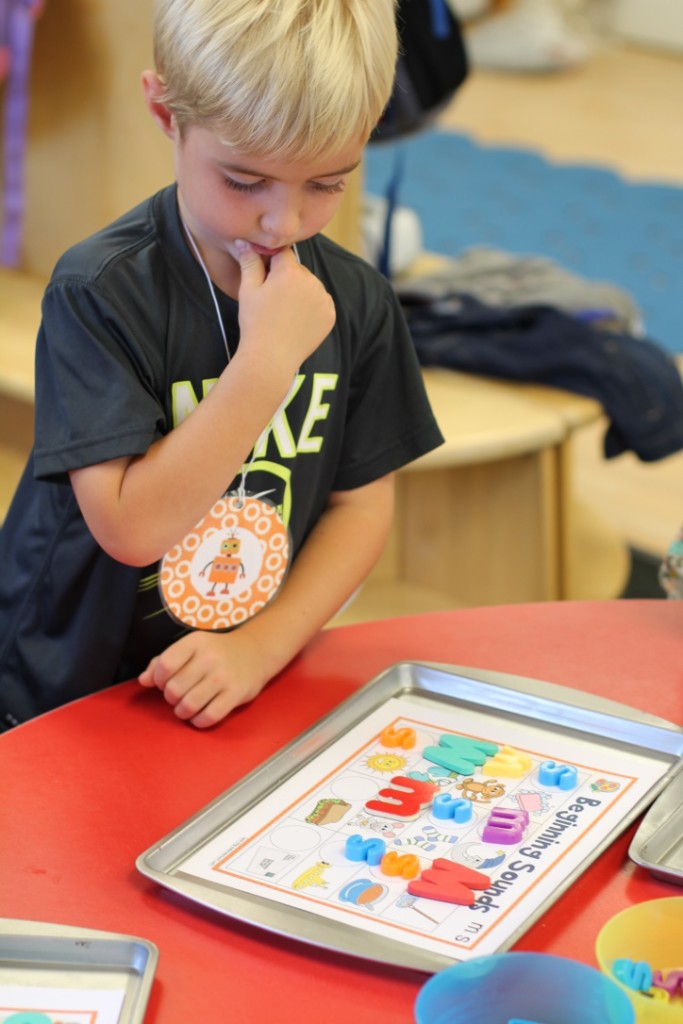
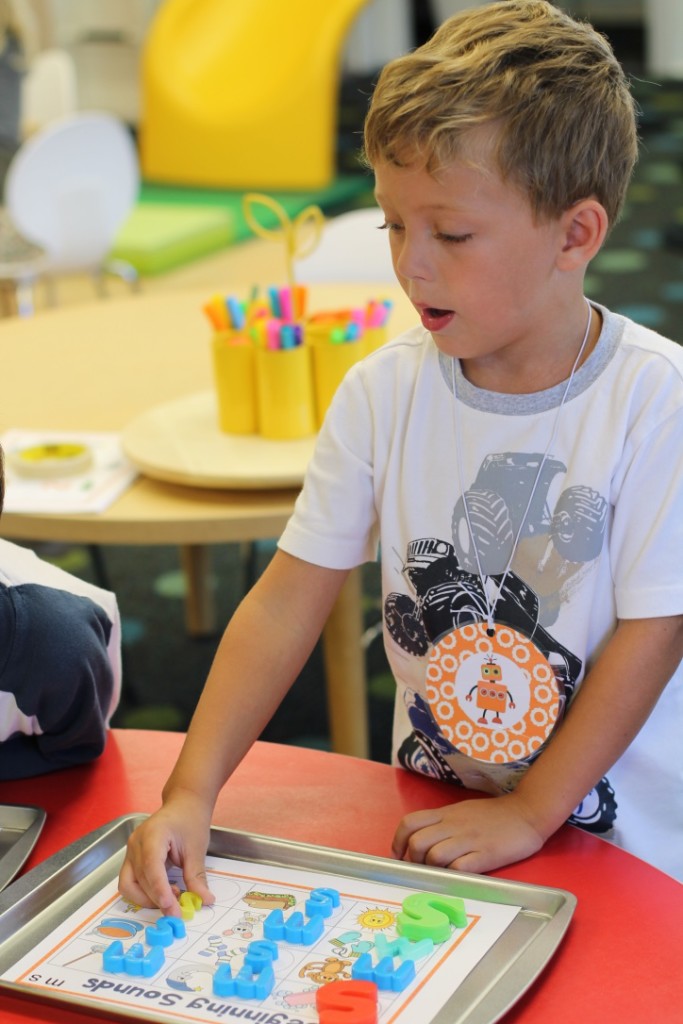
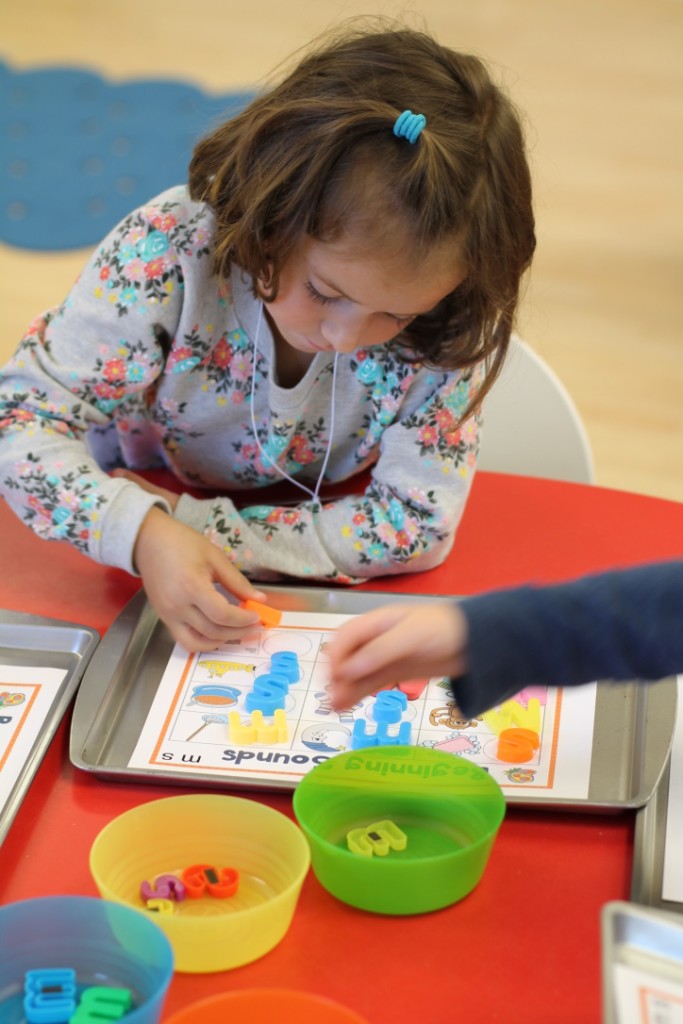
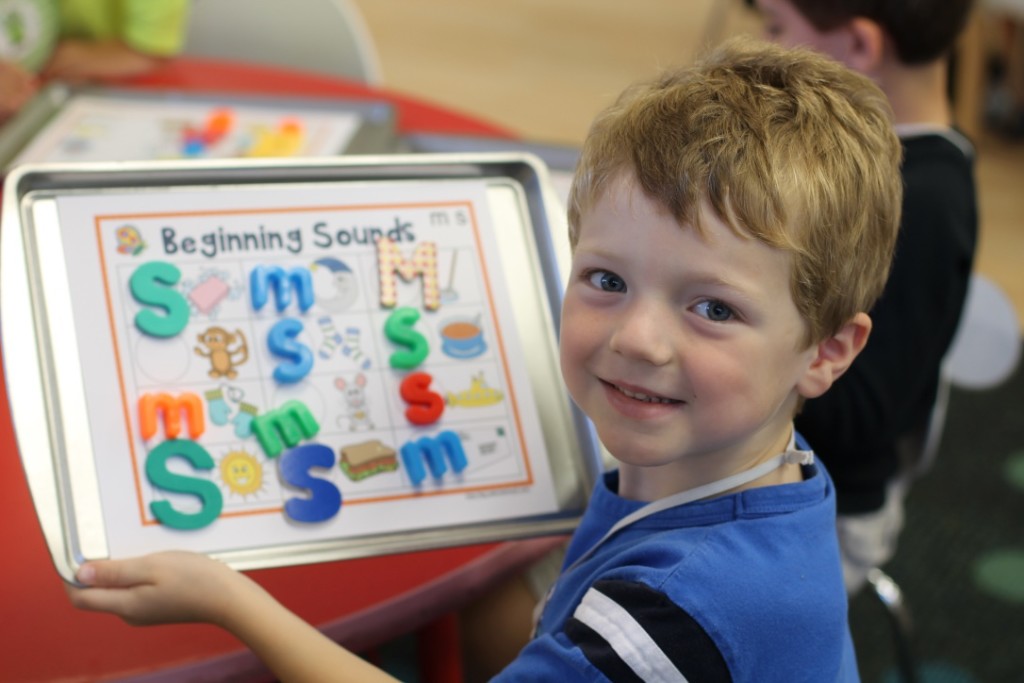
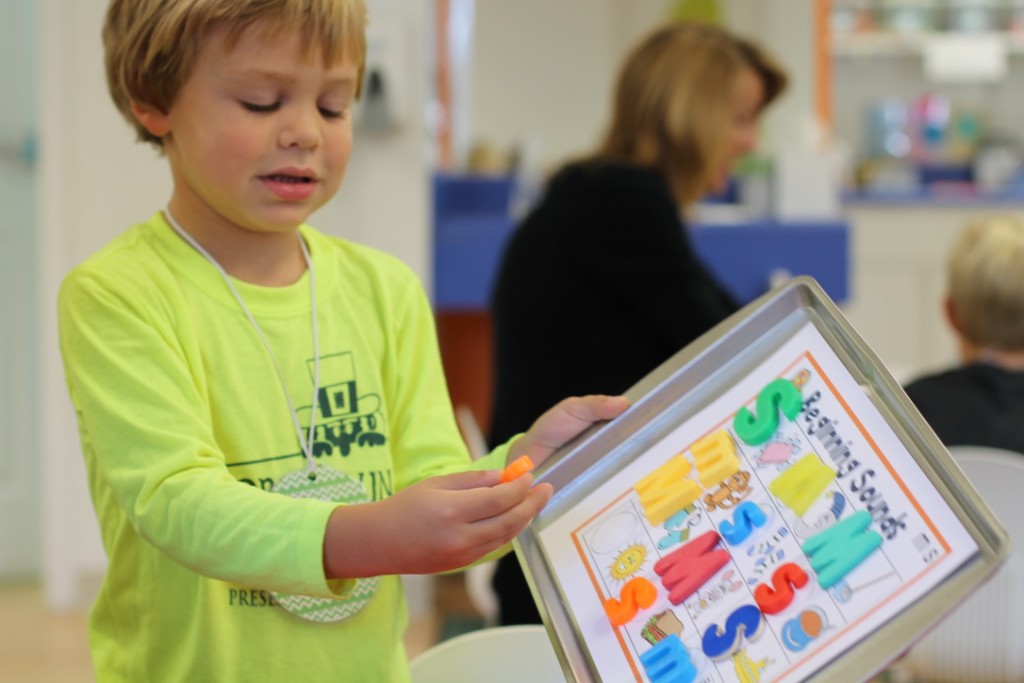
Cutting with scissors requires the skill of hand separation, which is the ability to use the thumb, index, and middle fingers separately from the pinkie and ring fingers. Providing children with frequent opportunities to develop their scissor skills allows them to practice using the tripod fingers (thumb, forefinger and middle finger). The tripod fingers are what work together in controlling a pencil. Developing the proper pencil grasp attributes to good handwriting. Strong scissor skills also leads to strong hand muscles and improved fine motor skills.
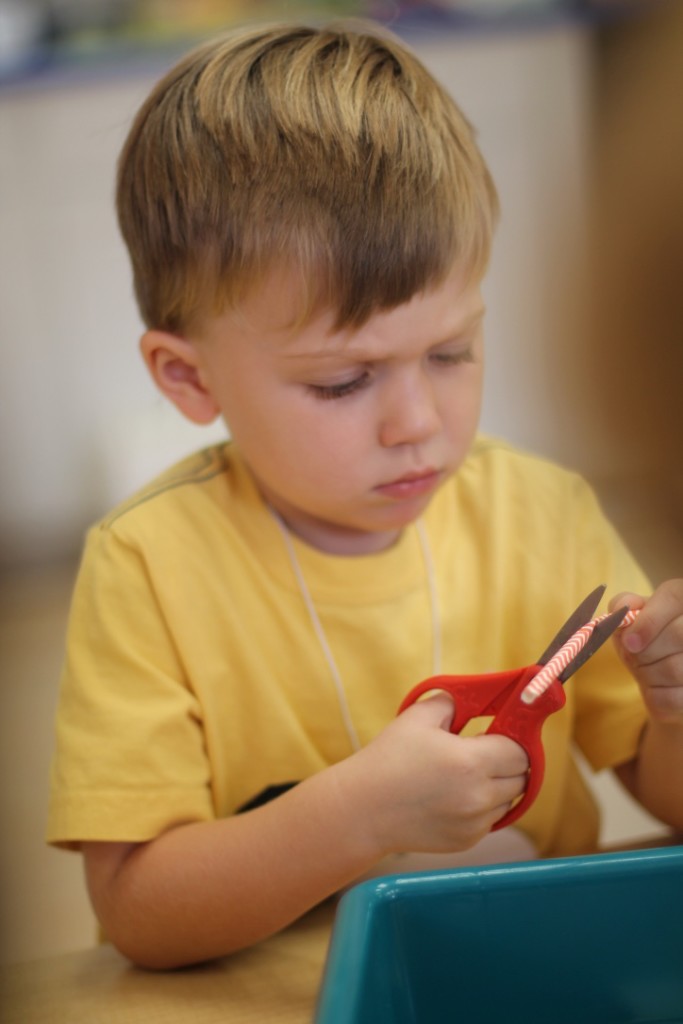
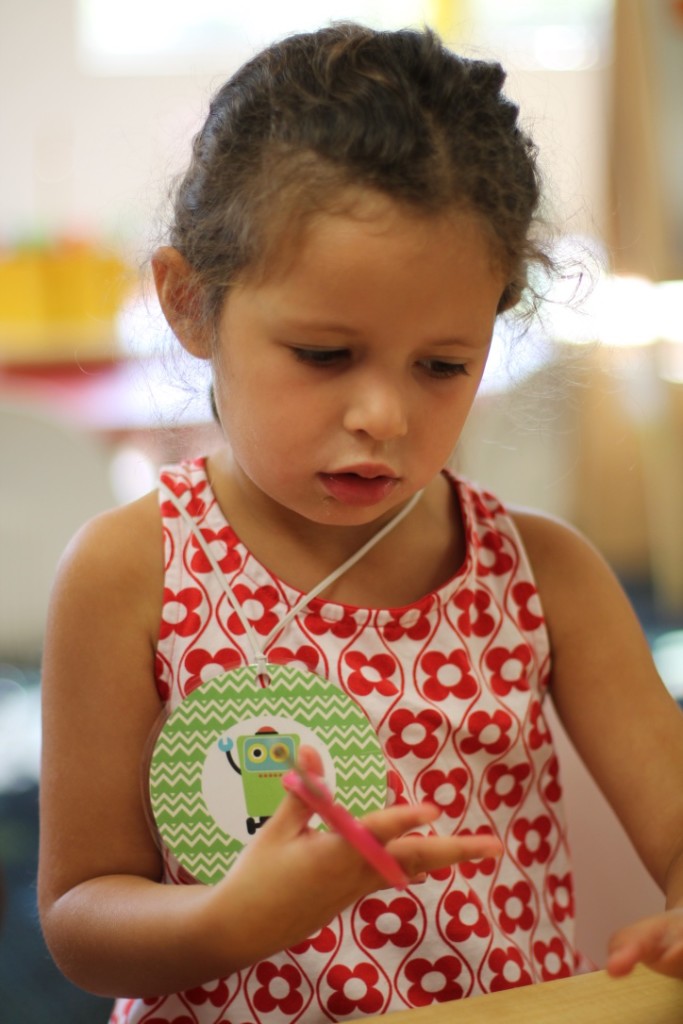
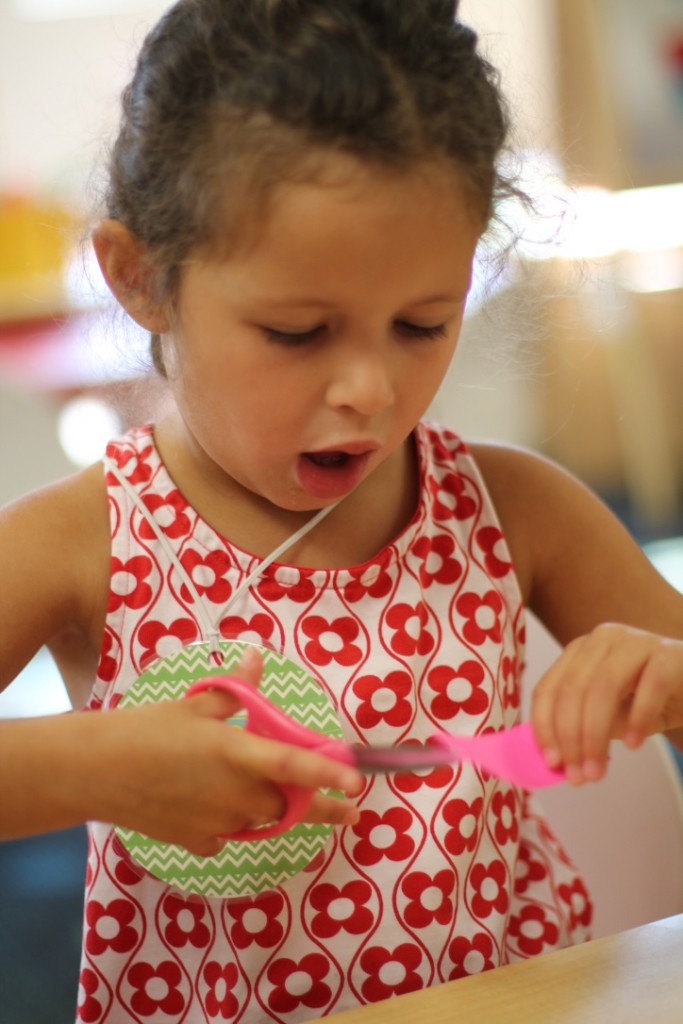
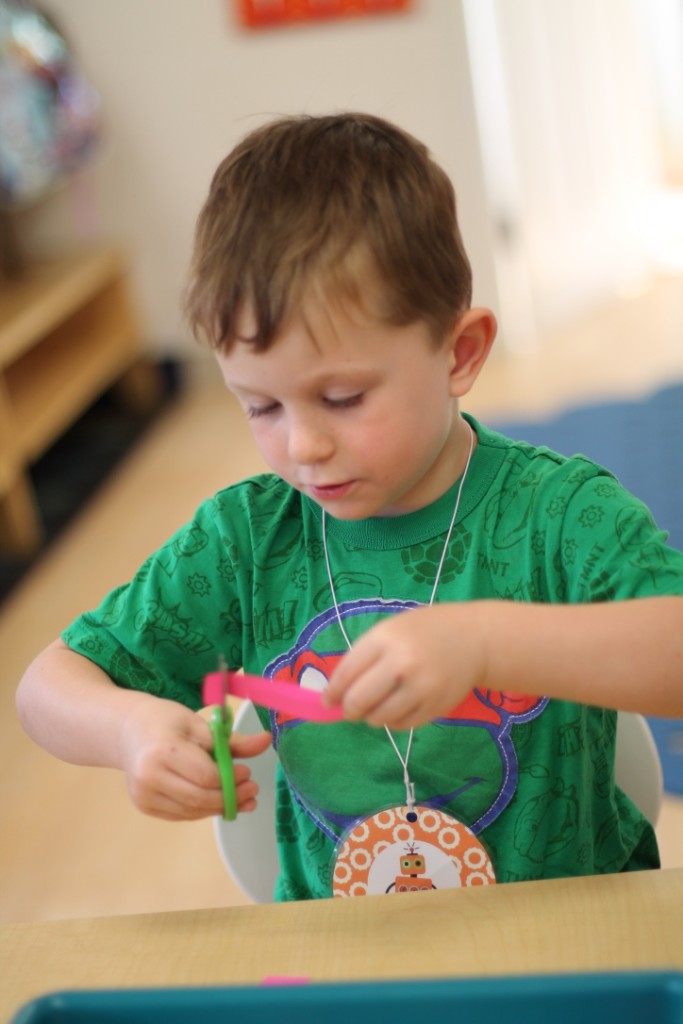
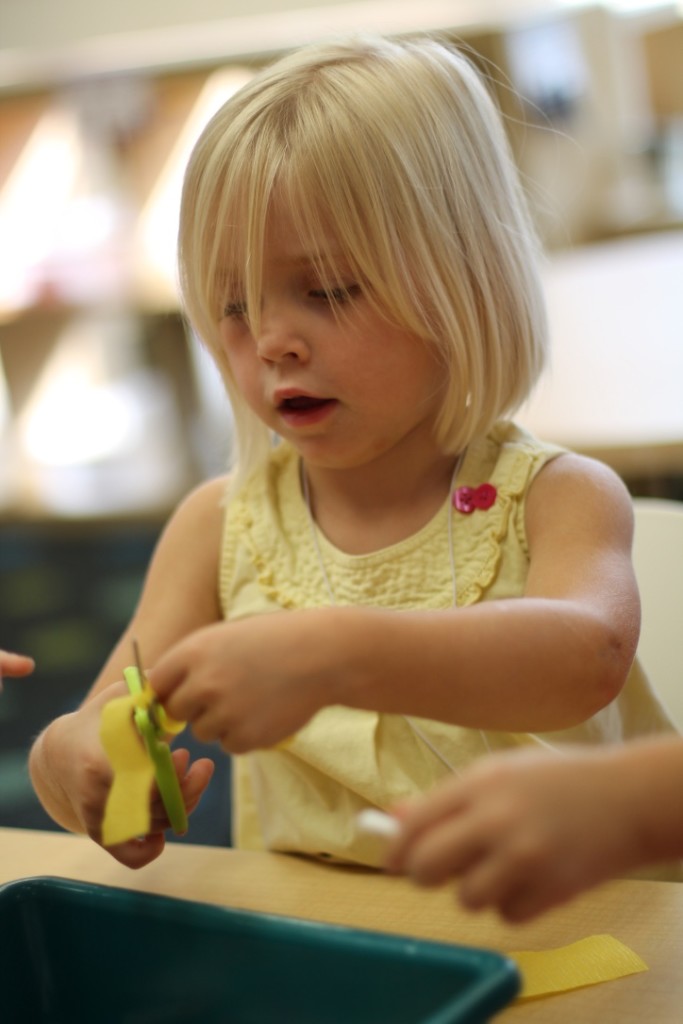
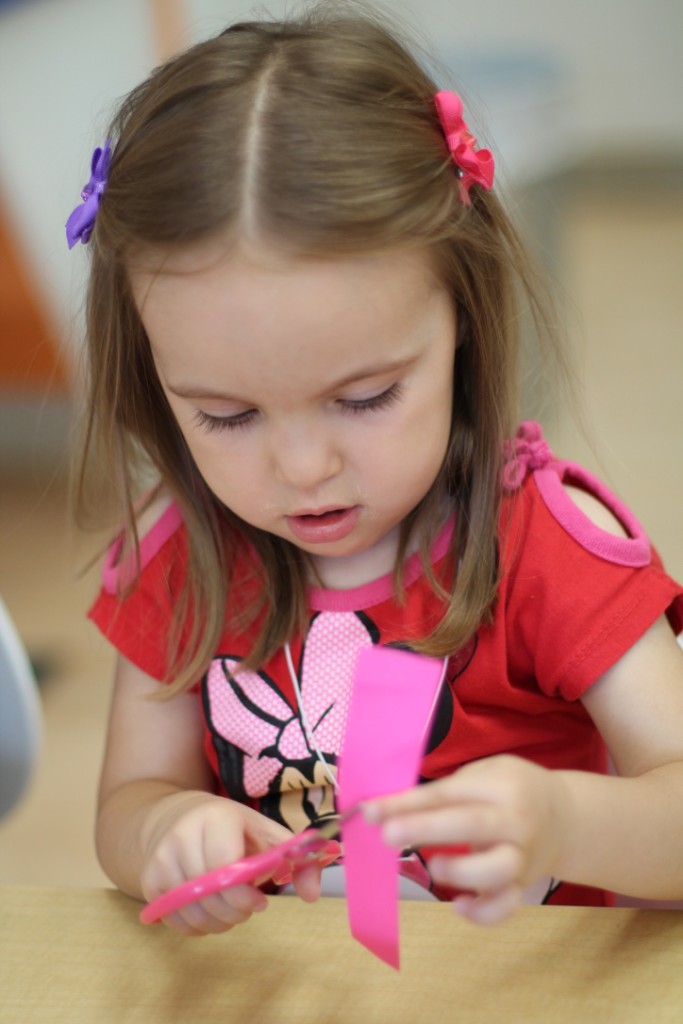
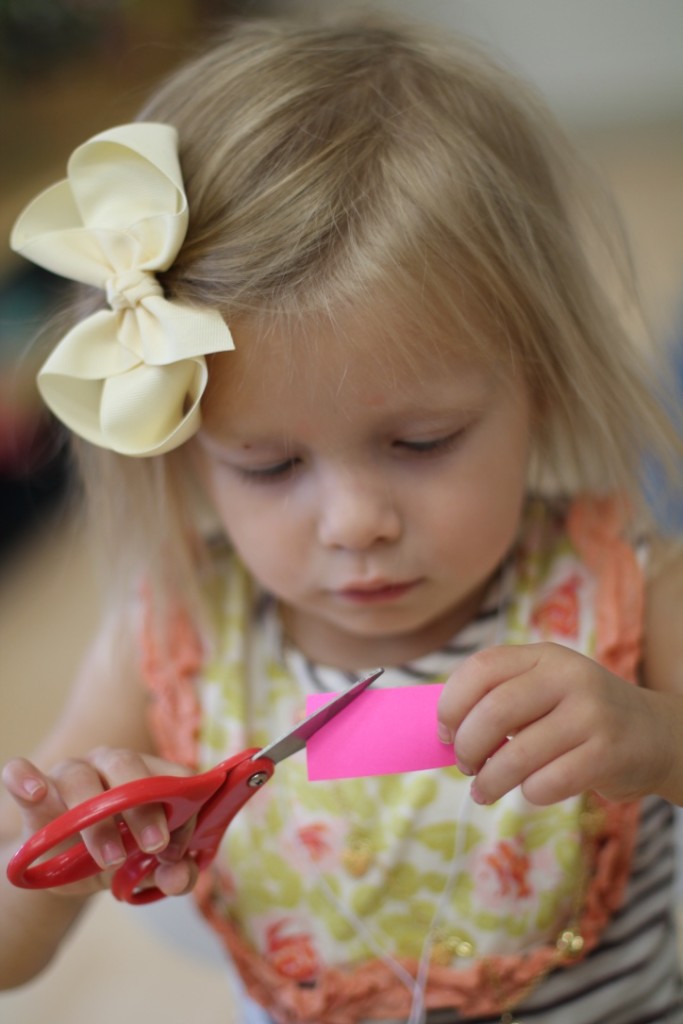
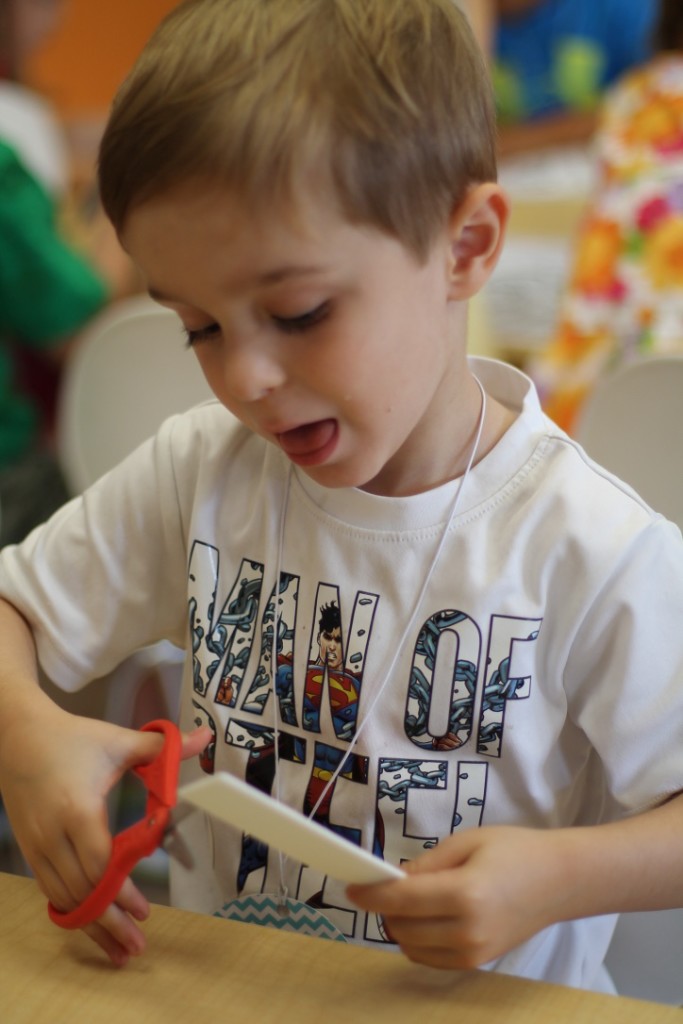
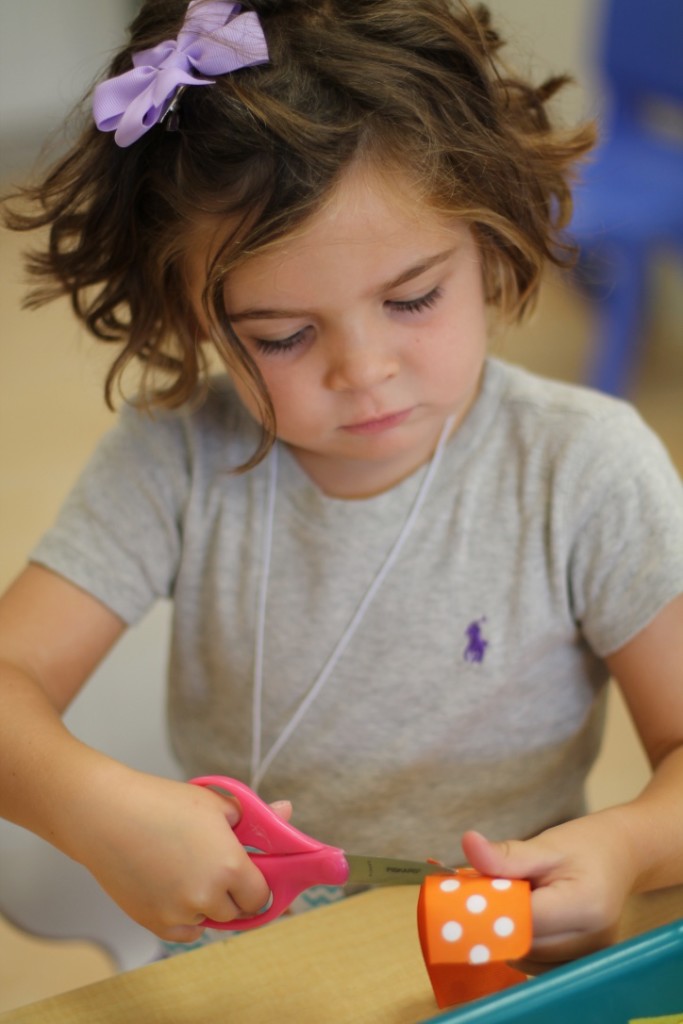
At around 18 months, there are notable changes in cognitive skills that help real friendships blossom. Toddlers become more consciously aware of herself and others. This stronger sense of self also helps the toddler become more aware of how other people feel. An emerging understanding of cause and effect helps the toddler to know that grabbing her friend’s shovel will make him cry. An equally new understanding of order and sequence gives the senior toddler the tools to begin to take turns.
These emerging thinking skills are embedded in the emotional life of the toddler who often struggles with urgent and sometimes volatile feelings. For instance, the 2-year-old’s strong push toward independence and autonomy might take the form of grabbing her friend’s shovel even though she knows her teacher won’t approve – and her friend will cry. The child’s need for feelings of control or power become focused on possessing that particular shovel, no matter what! How we intervene can make a difference in how the child learns to navigate the give and take of friendship. Give him/her the language so that she/he can label and express their needs. “You really want that shovel, but Nicholas is using it now. You can use it when he is finished. It is so hard to wait for something you really want.” Empathize with the toddler while you set clear social rules. You can offer an alternative toy but refrain from quickly distracting her. Give her a moment to think about how she is feeling and adapt to the demands that come with learning how to play with other children. Sometimes 2-year-olds who are having a conflict can work things out themselves, so wait that extra moment before moving in.
Developing friendships depends on the toddler’s growing ability to regulate or control herself. A friendship between two toddlers can be very intimate and meaningful, especially when they are together each day.
source: Ages and Stages: How Children Build Friendships
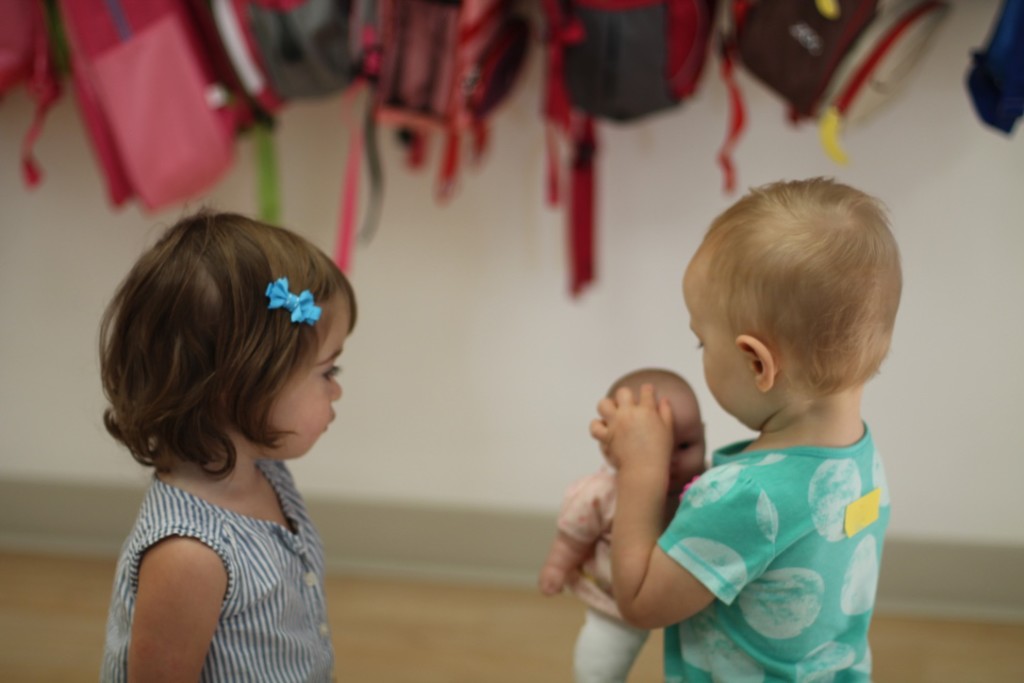
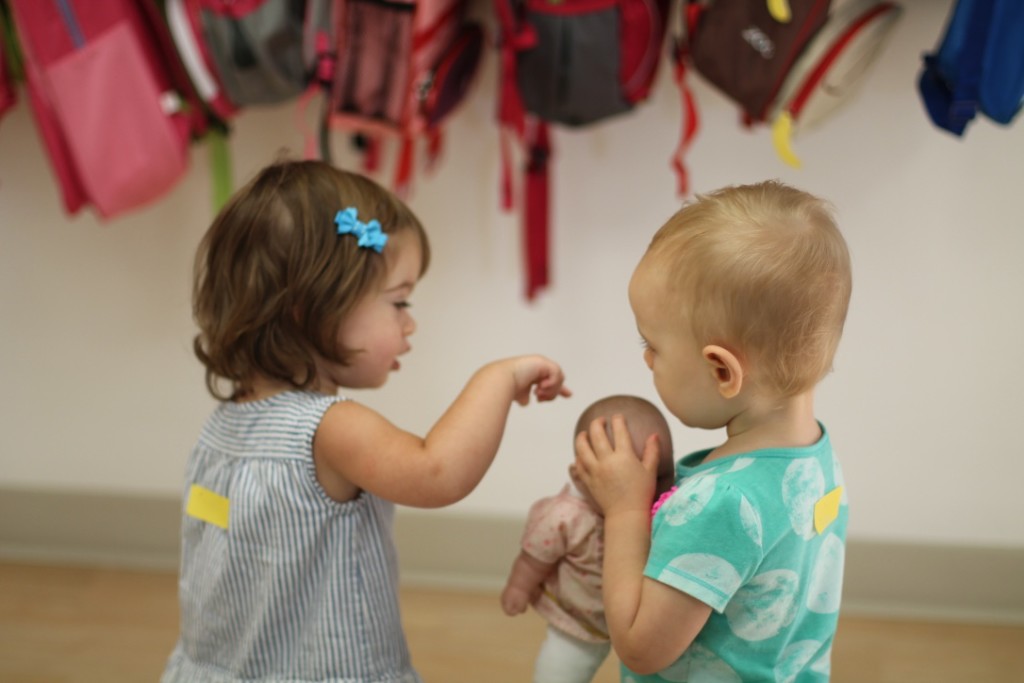
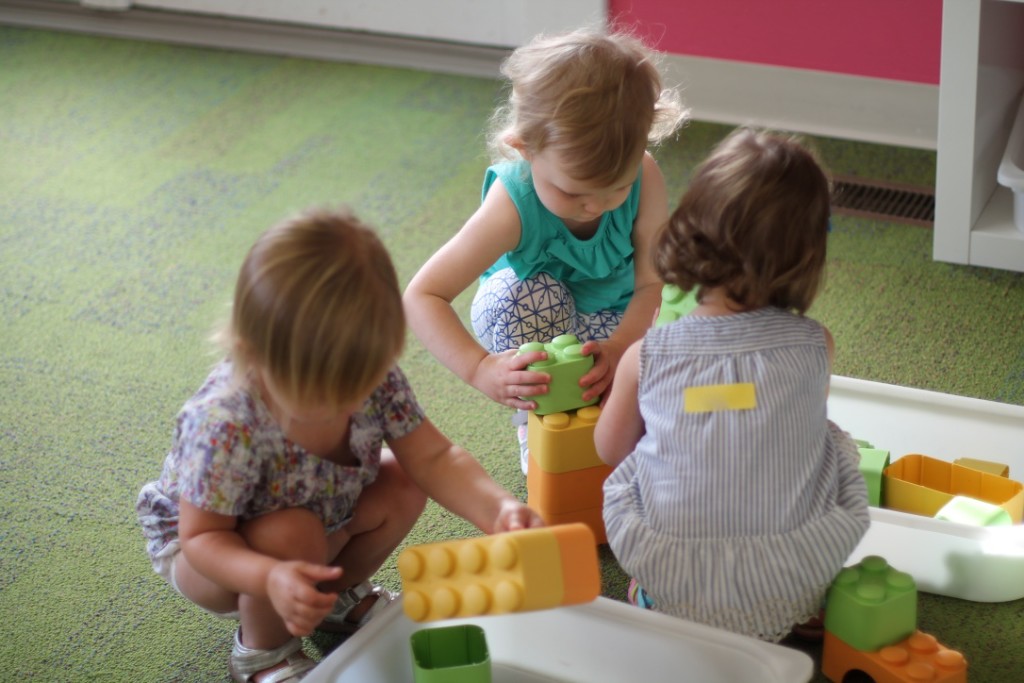
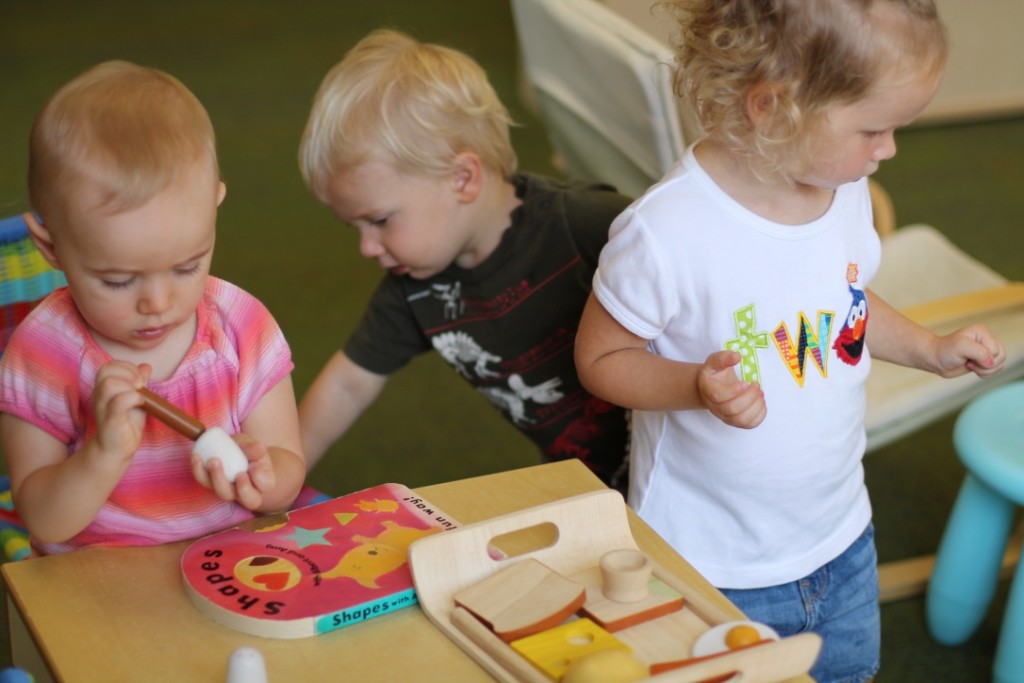
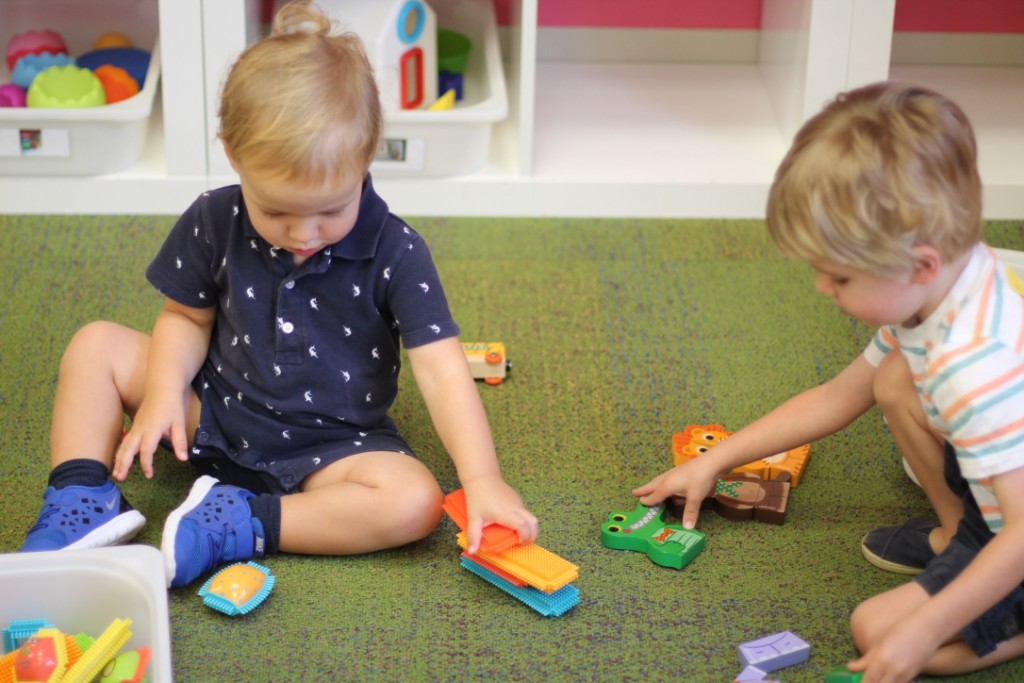
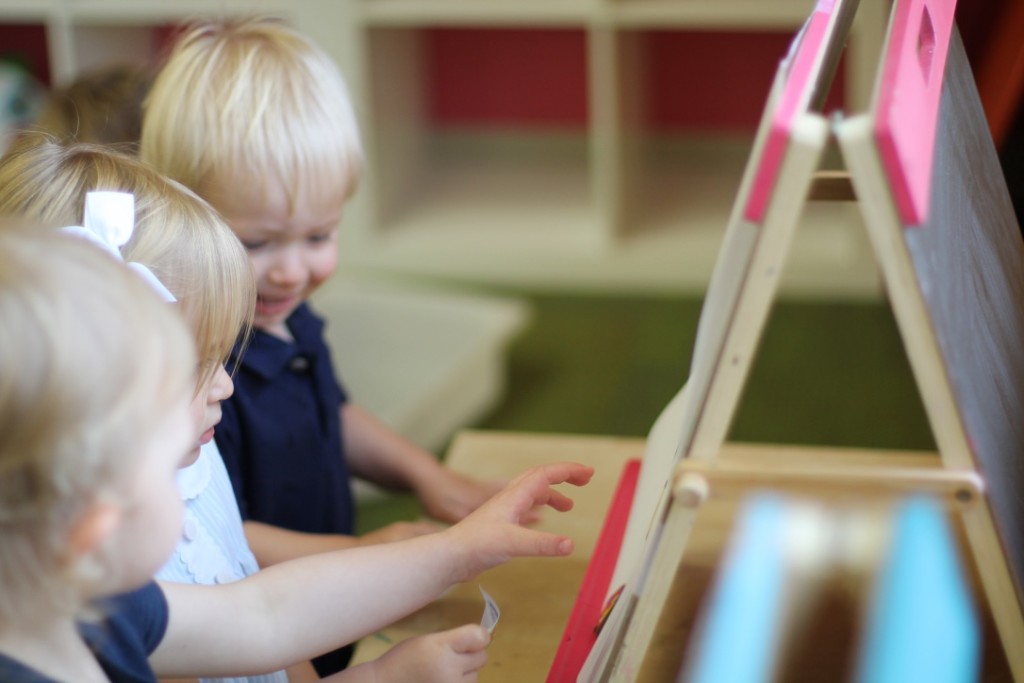
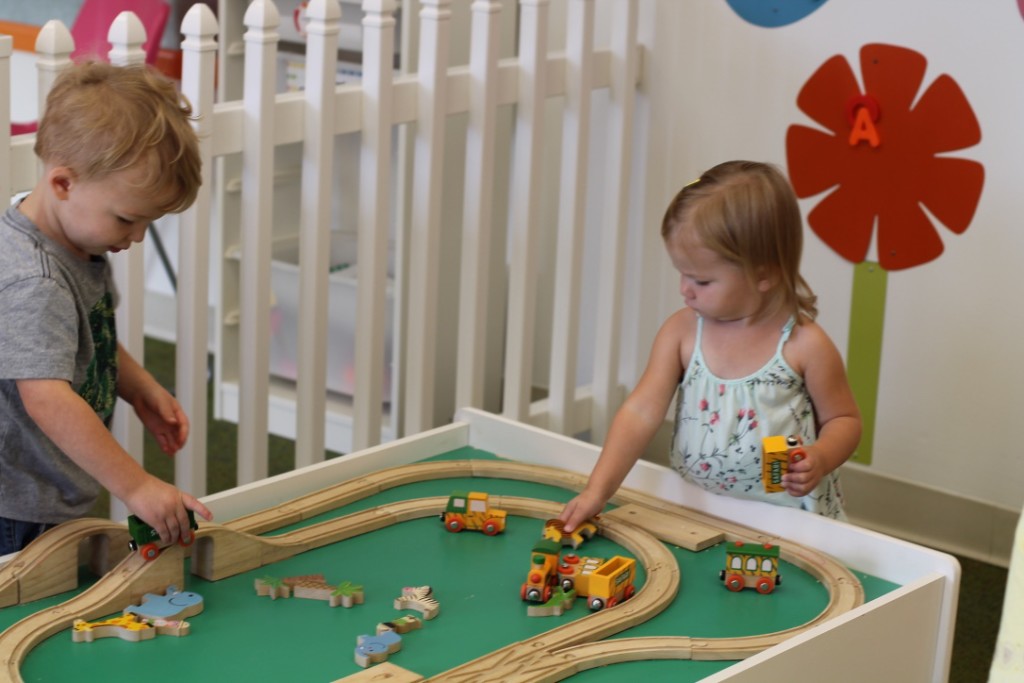
Playing outdoors allows our toddlers to learn about the world around them. Can sticks stand up in the sand? How does mud feel? Why do we slide down instead of up the slide? How do I make my truck go faster? How does the tree create cool shade from the sun? Why is the water in the water table cool in the morning and warm in the afternoon? Not only do children learn many of the basic and fundamentals about how the world works around them, they are more apt to remember what they learned because it was a concrete and personally meaningful experience!
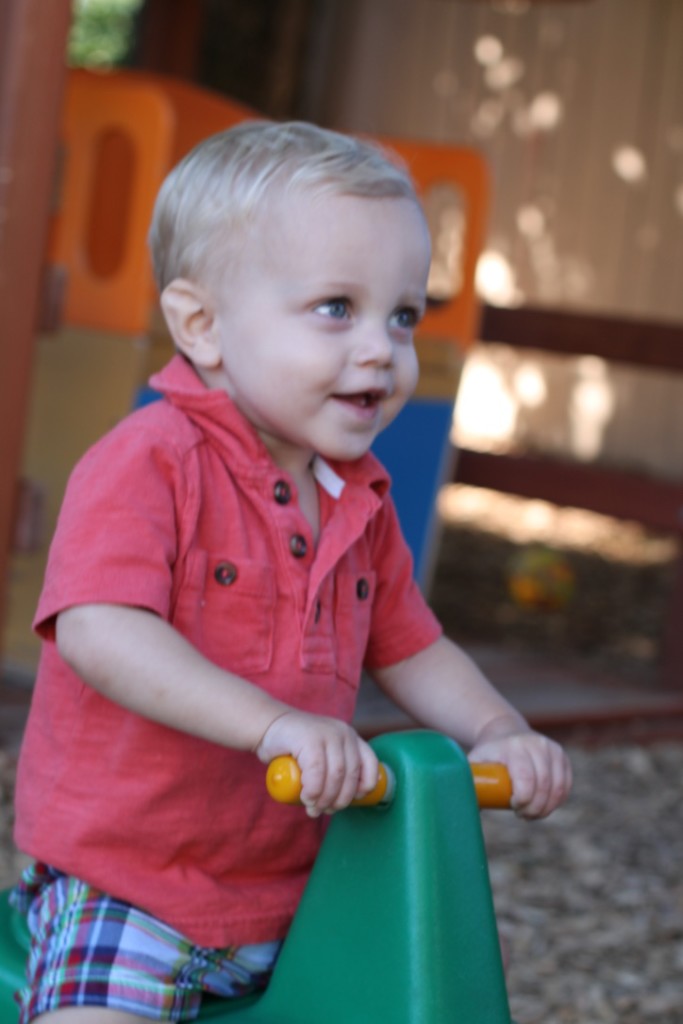
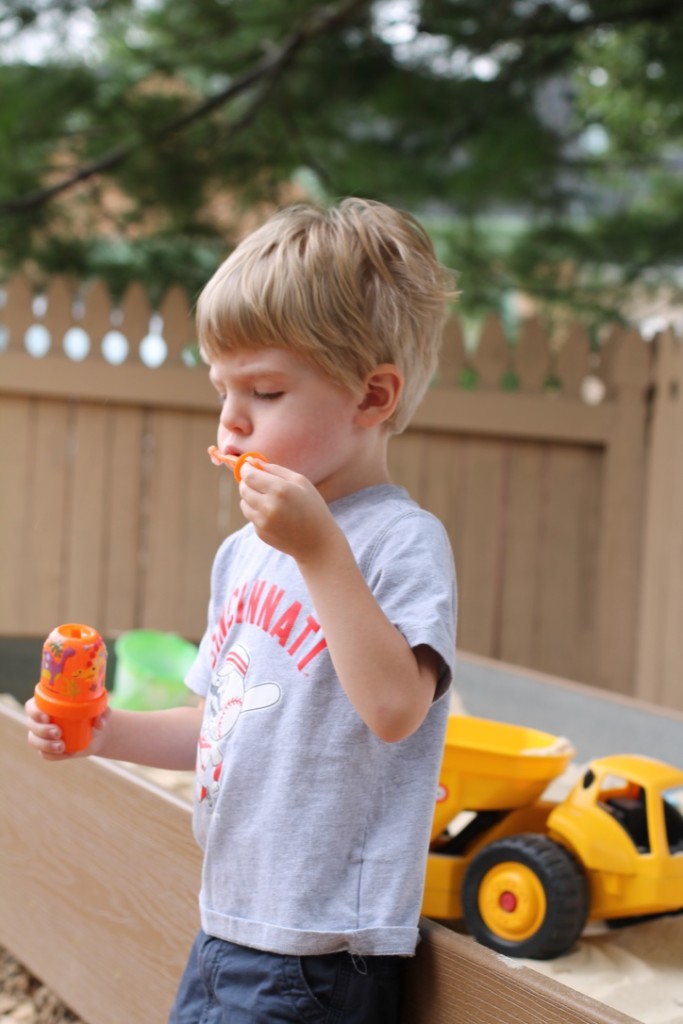
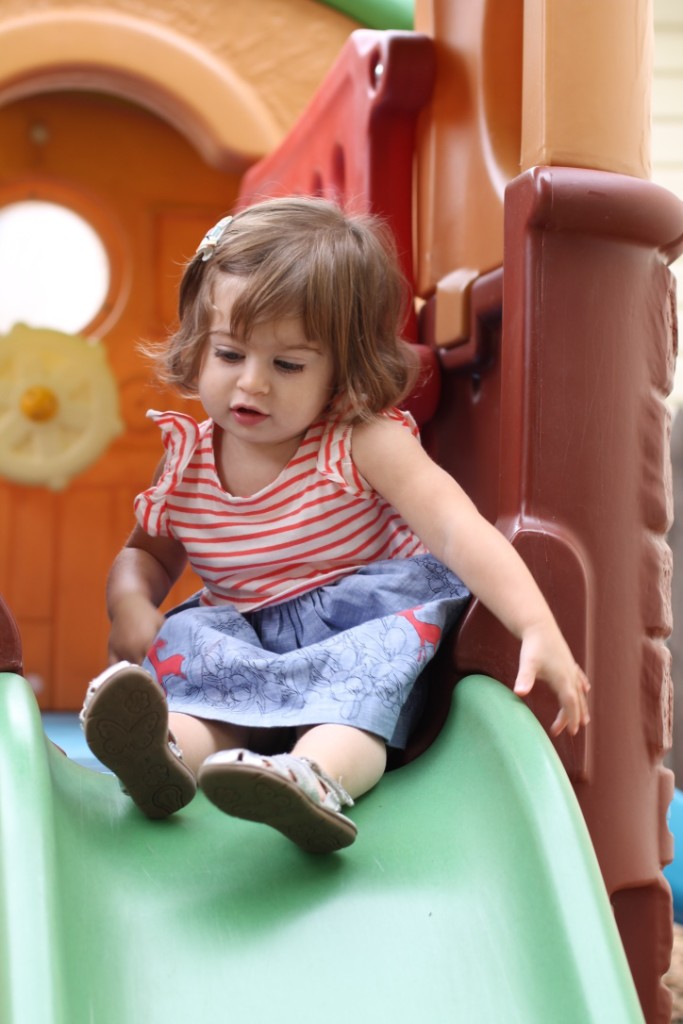
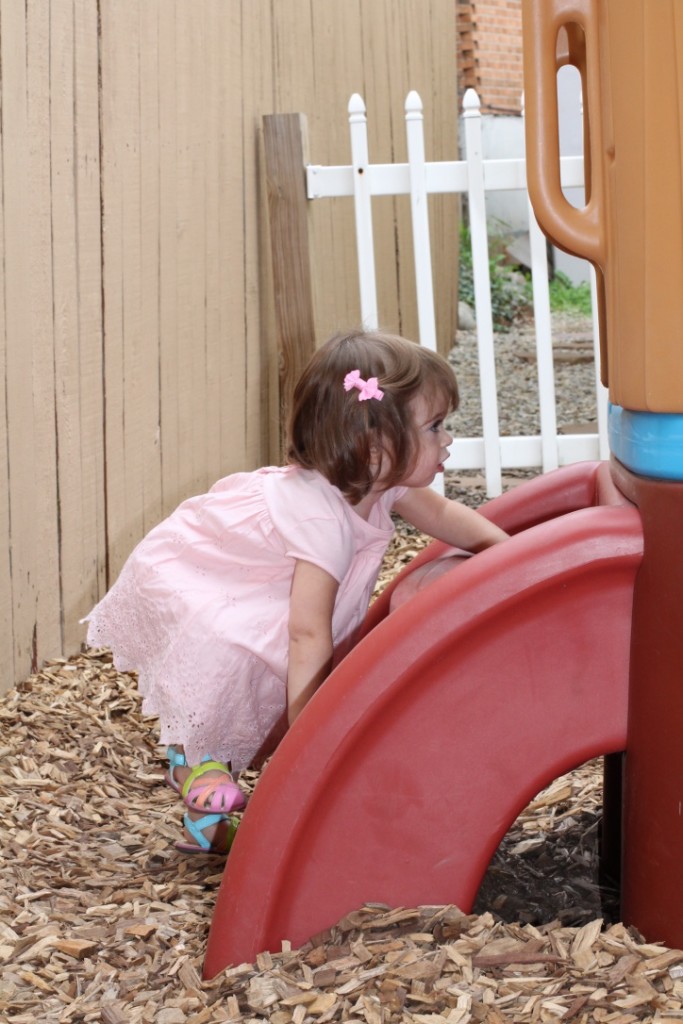
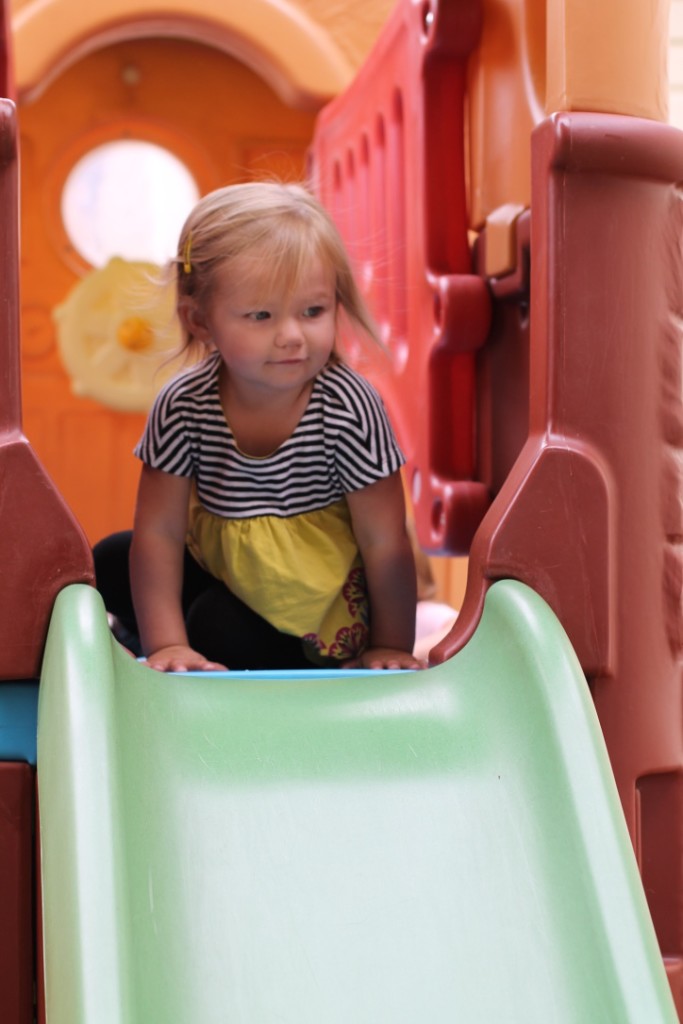
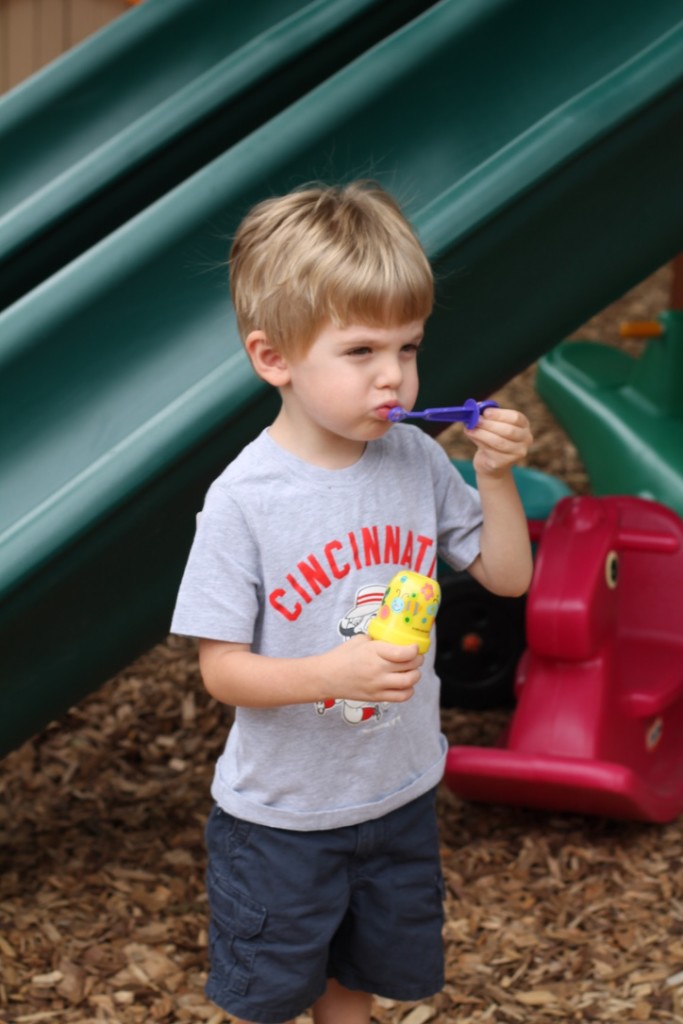
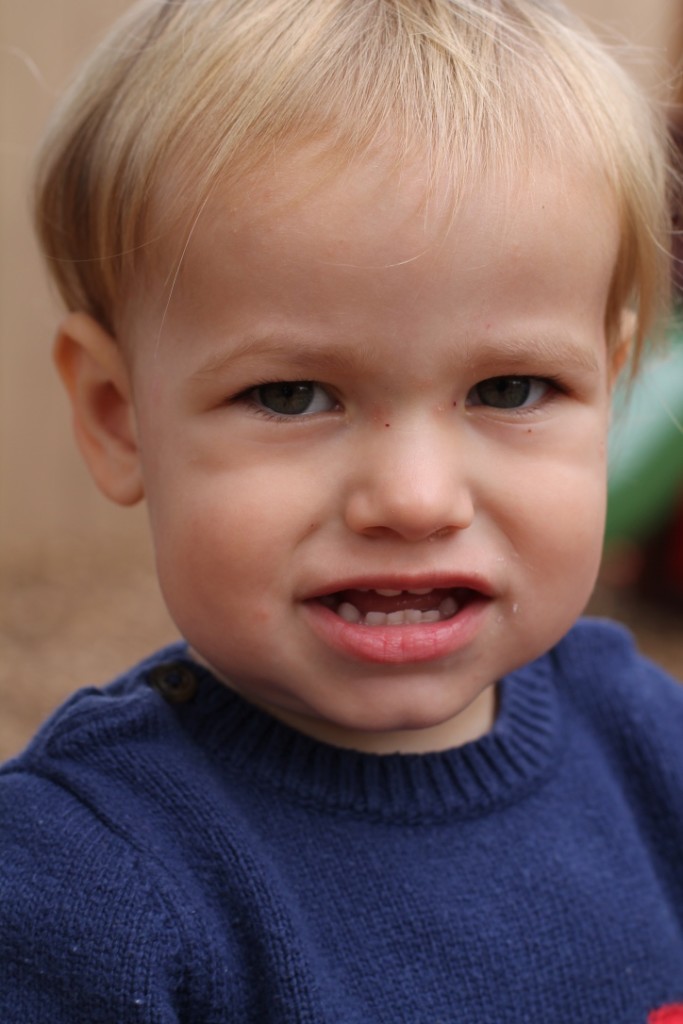
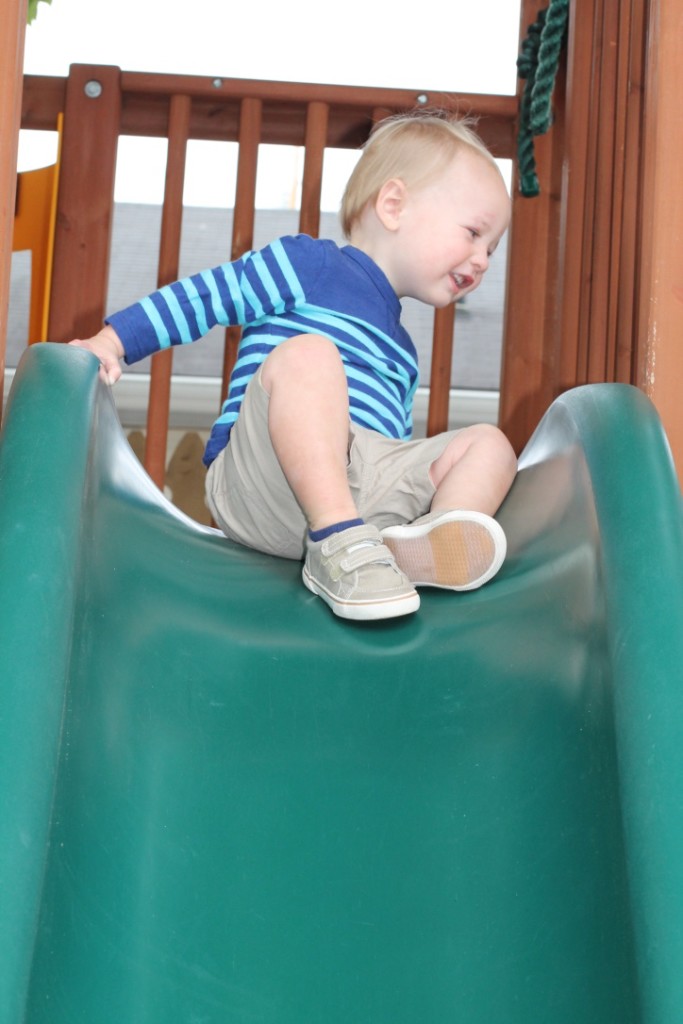
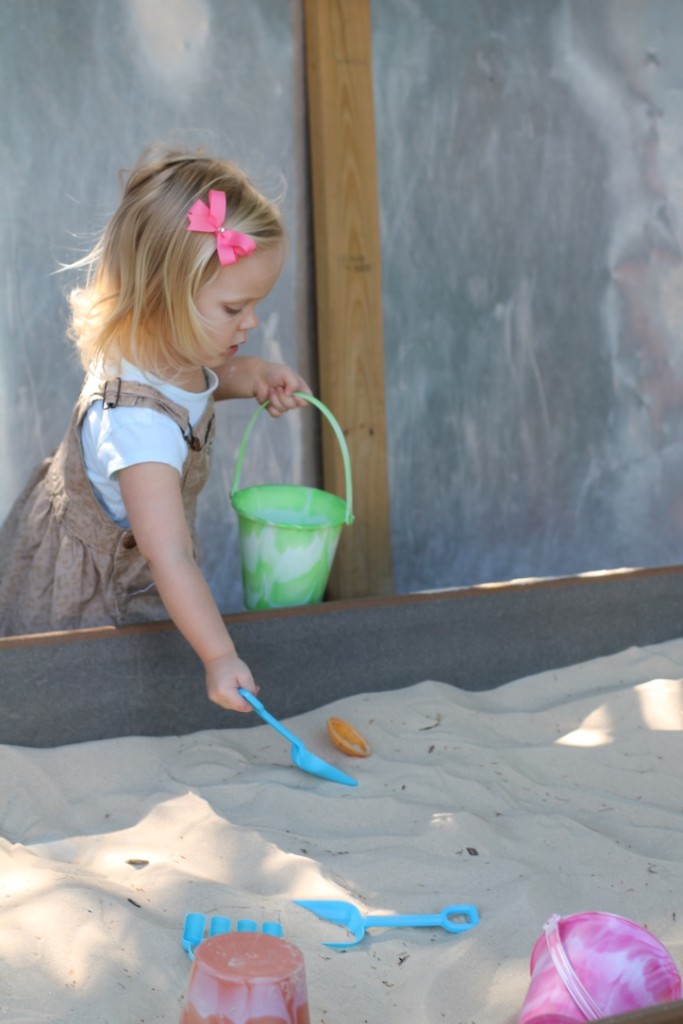
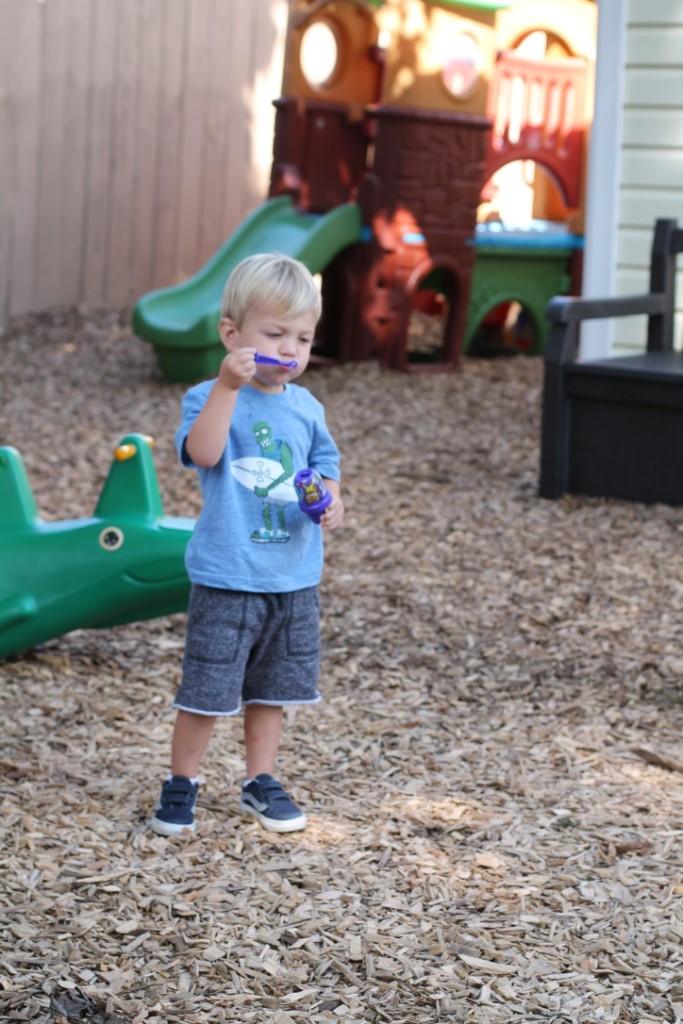
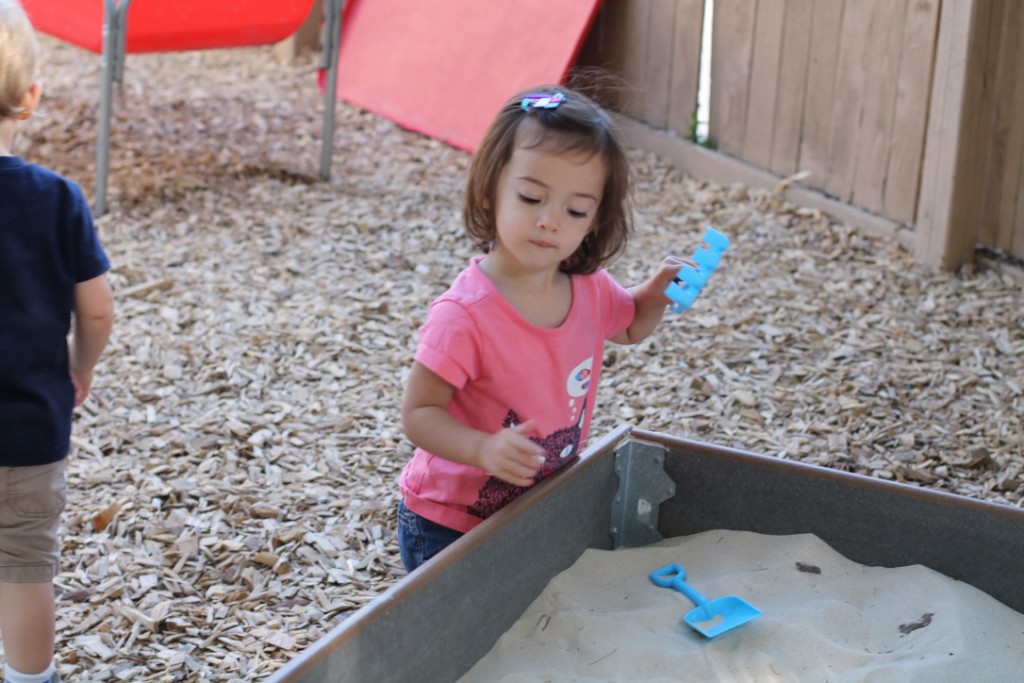
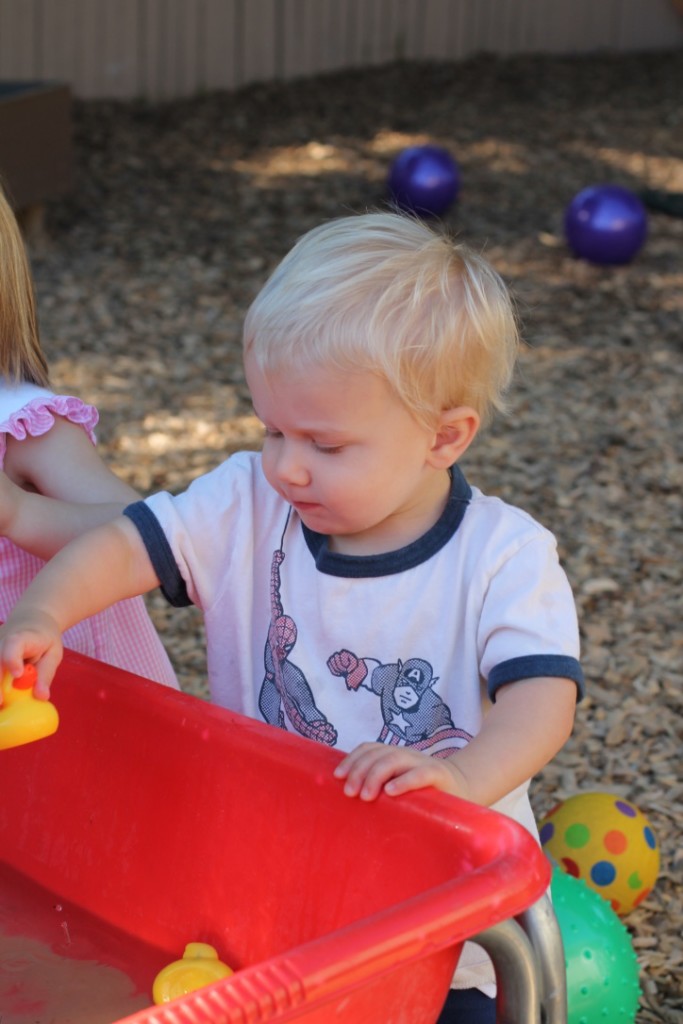
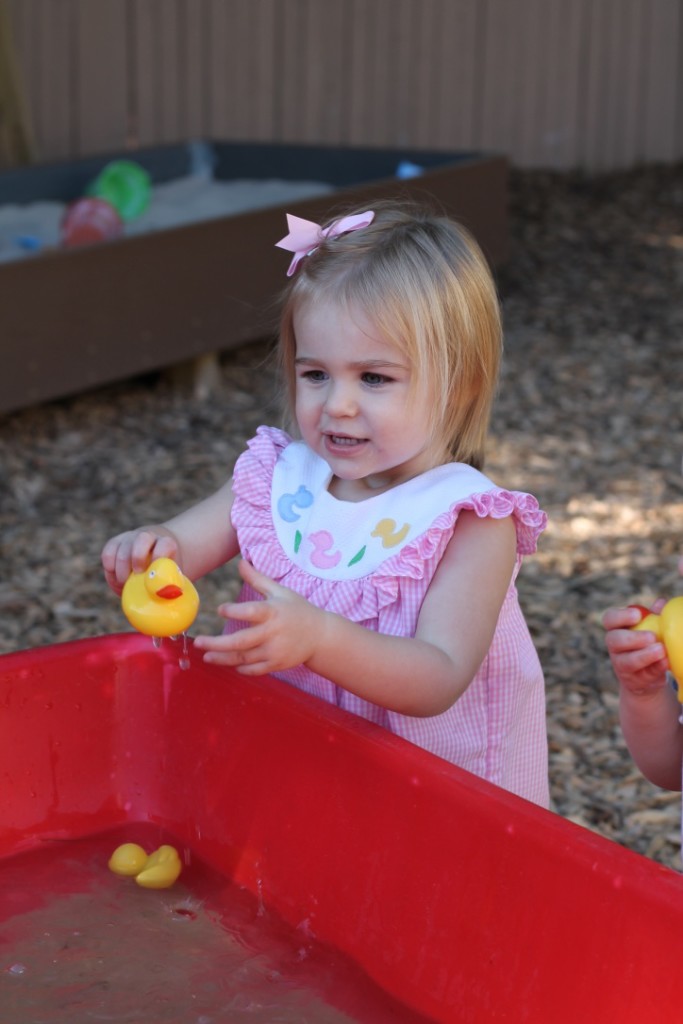
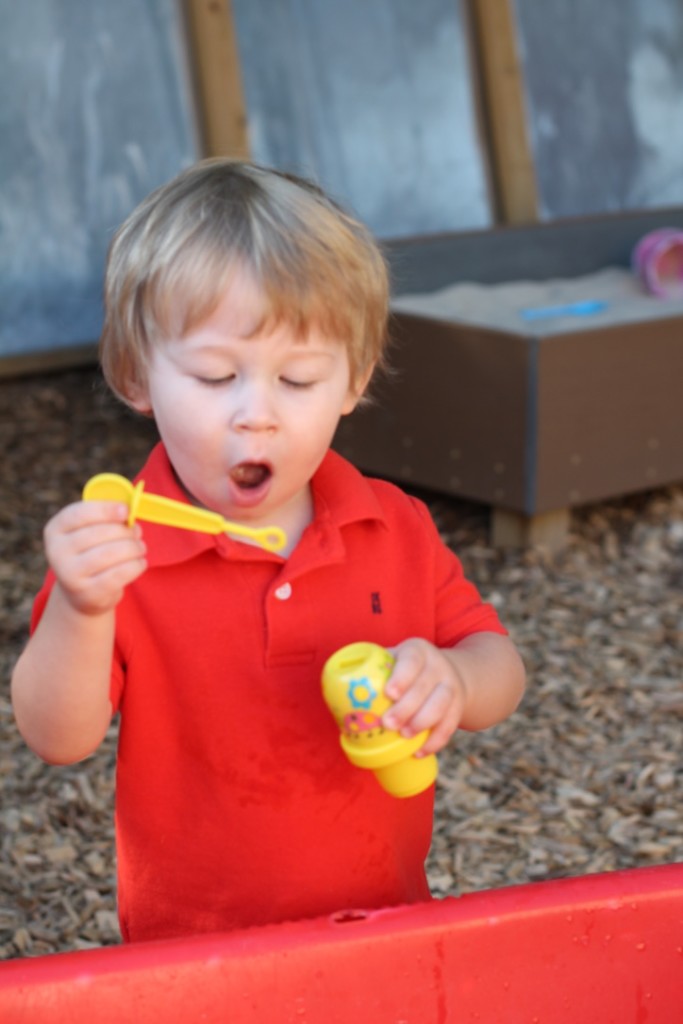
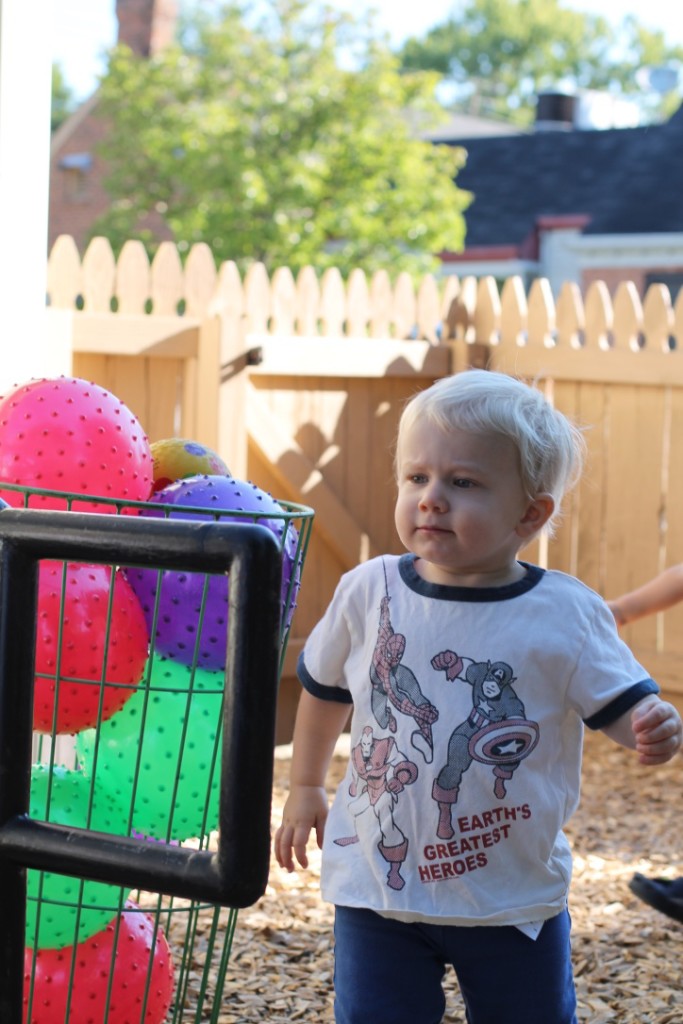
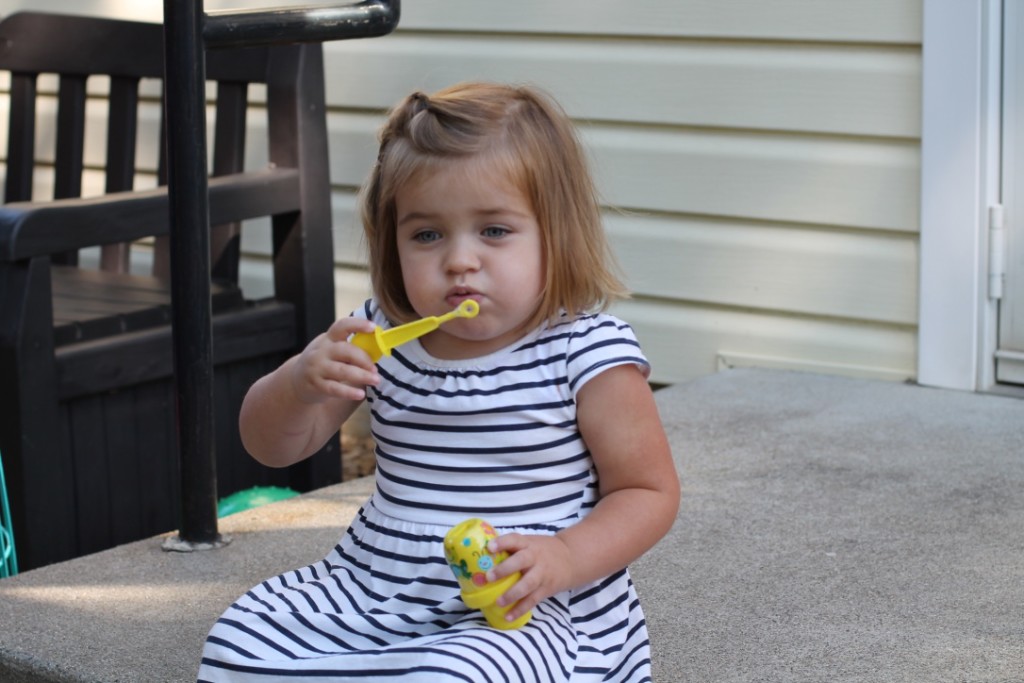
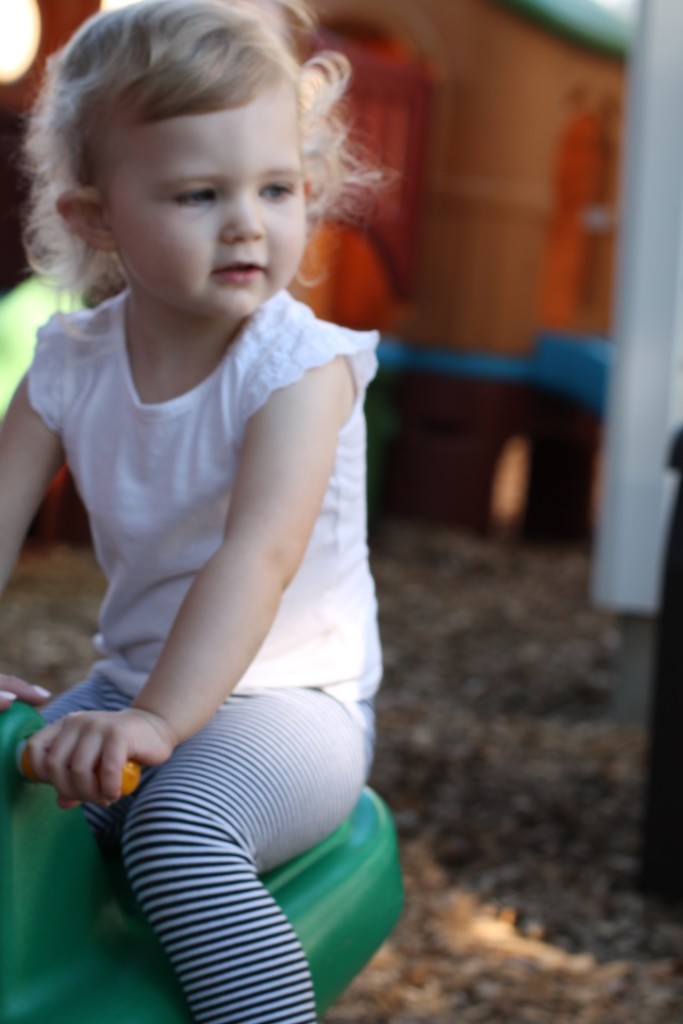
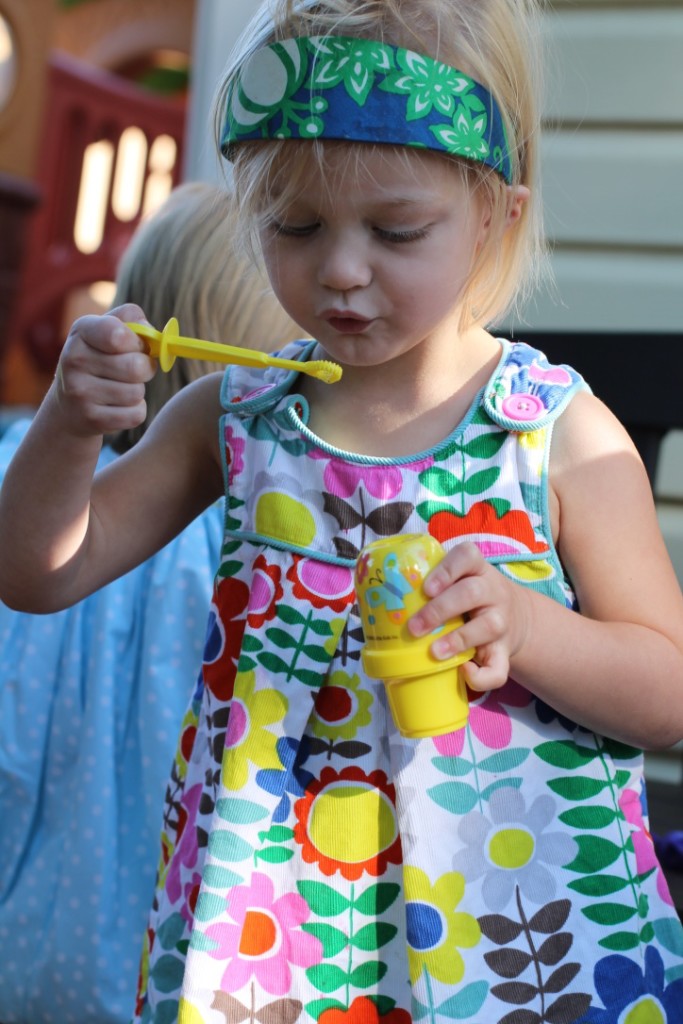
Young children learn in many different ways. One way they learn is through purposeful play and open ended activities. Open ended art experiences give them a chance to explore the world around them, ask questions, and see how things work. These art experiences allow them room to be themselves, make their own decisions, and just create. We used liquid watercolors, absorbent paper towels, eye droppers, and small paint brushes to create! The children loved watching their tiny drops spread and mix into a starburst as they hit the towels.
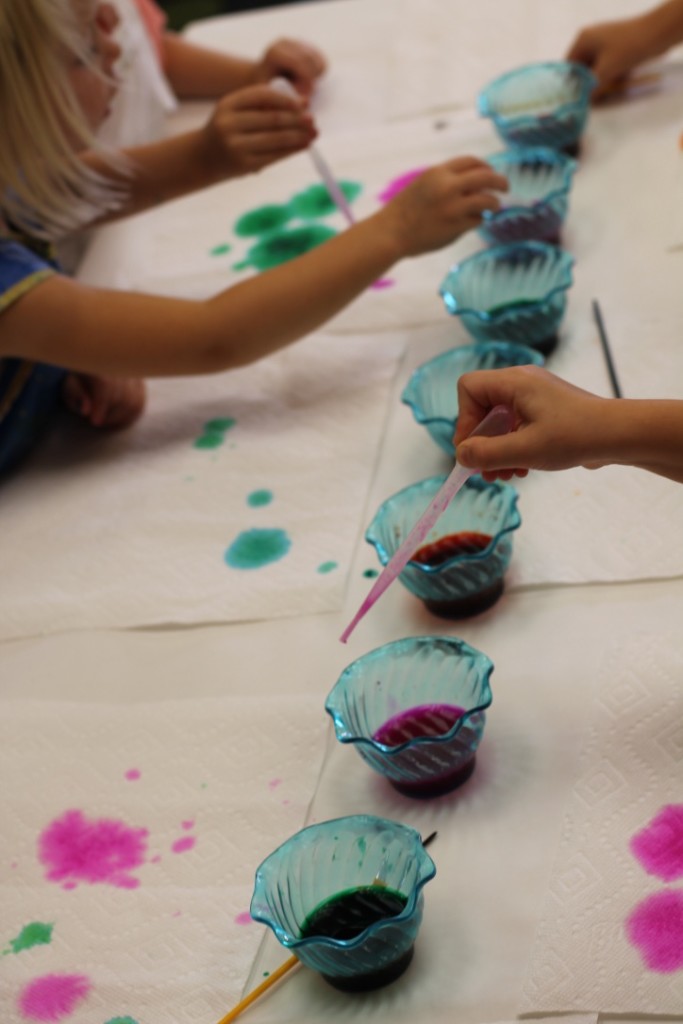
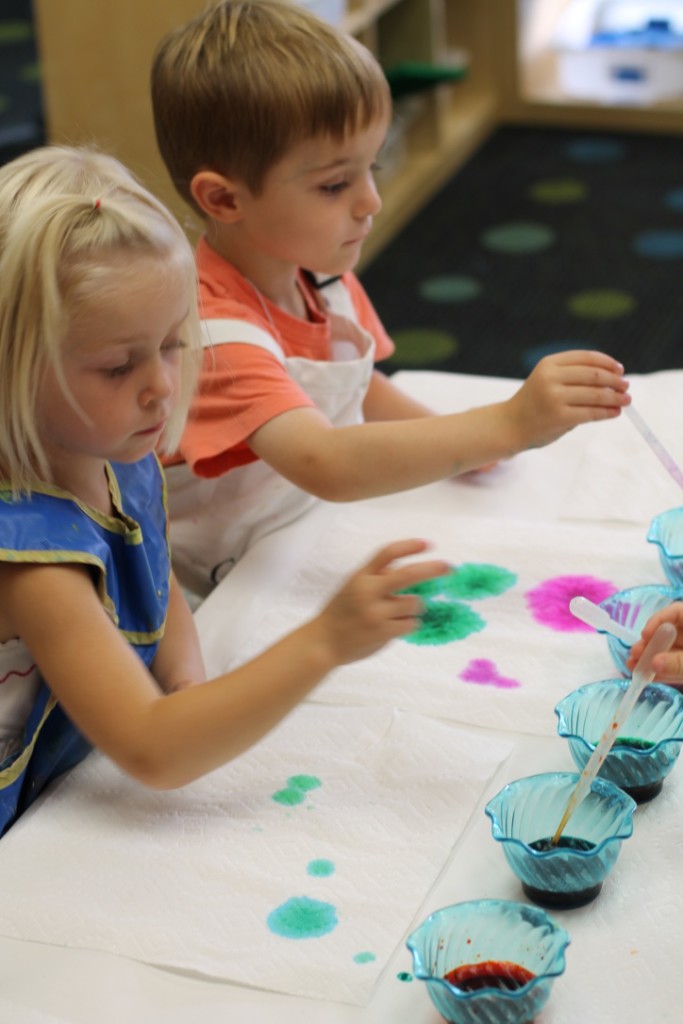
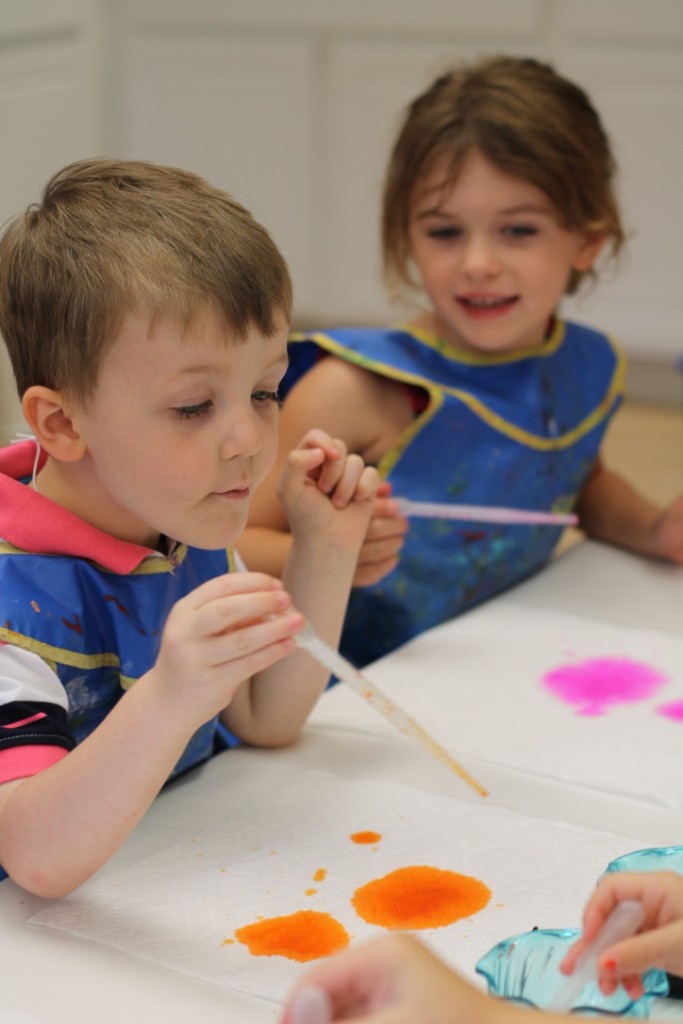
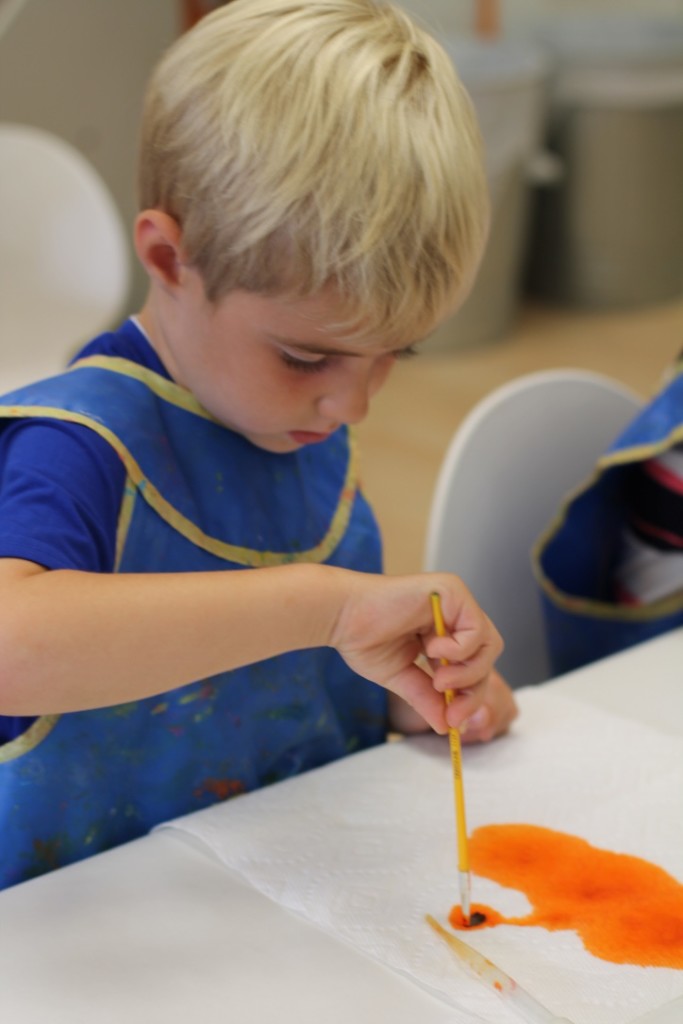
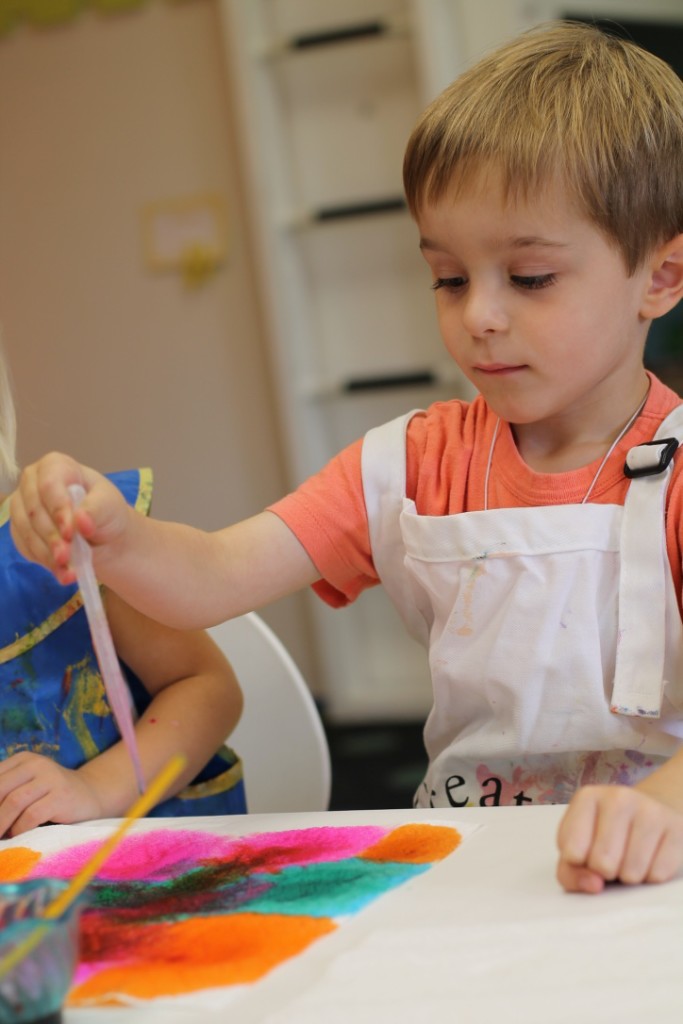
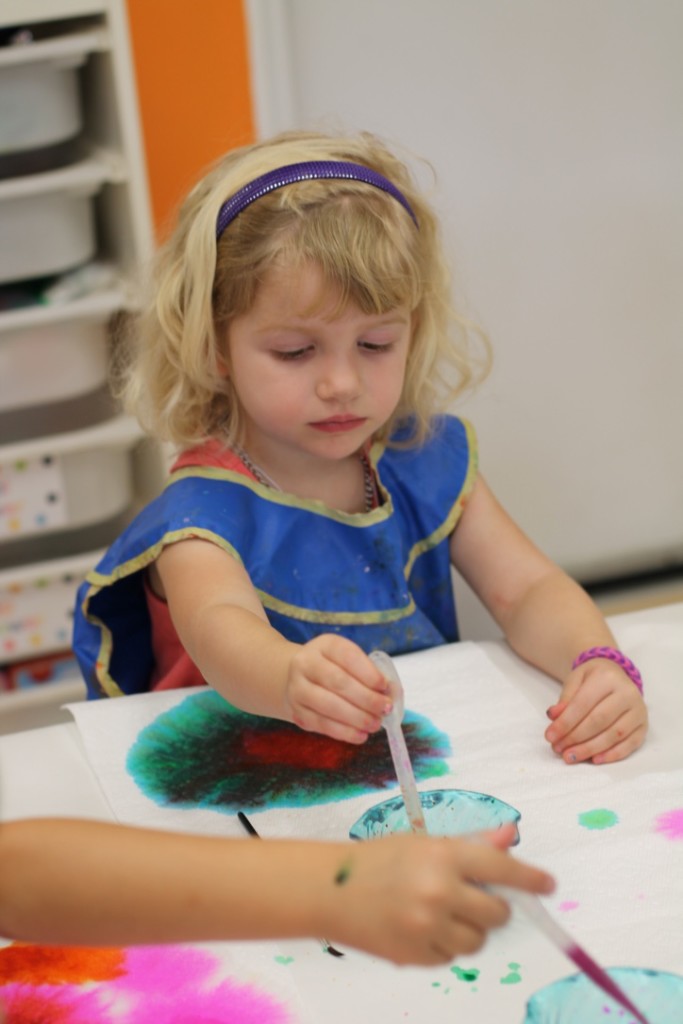
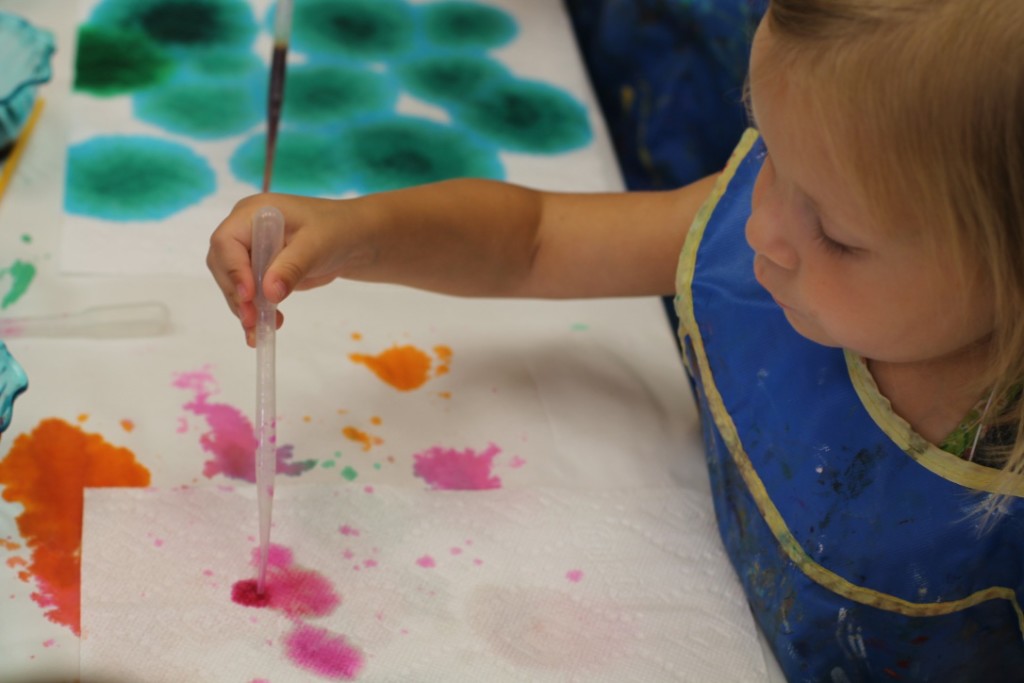
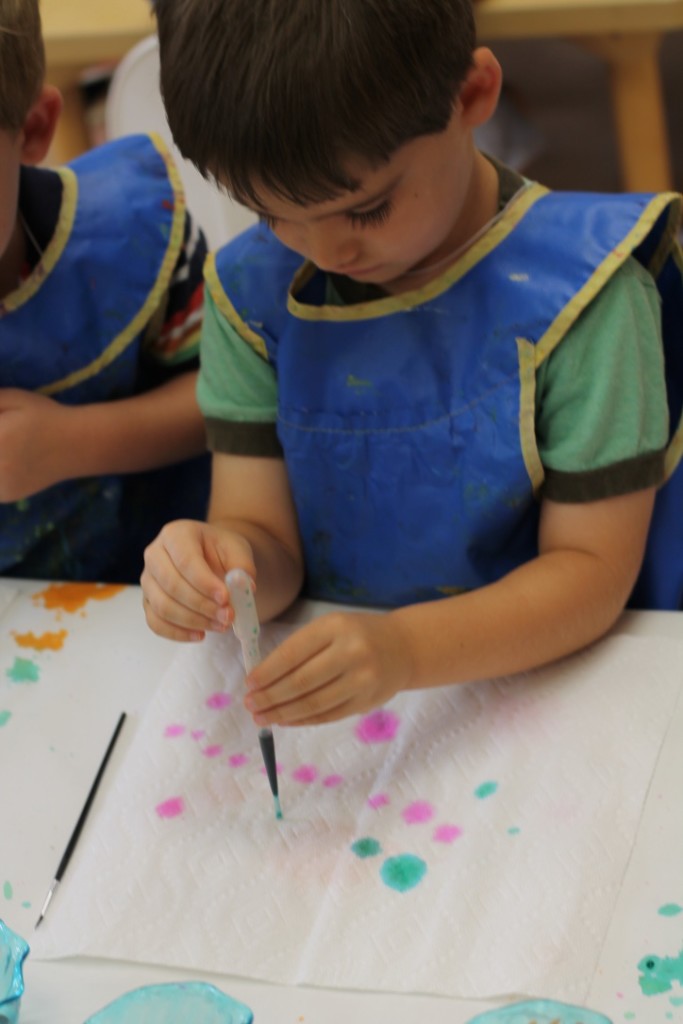
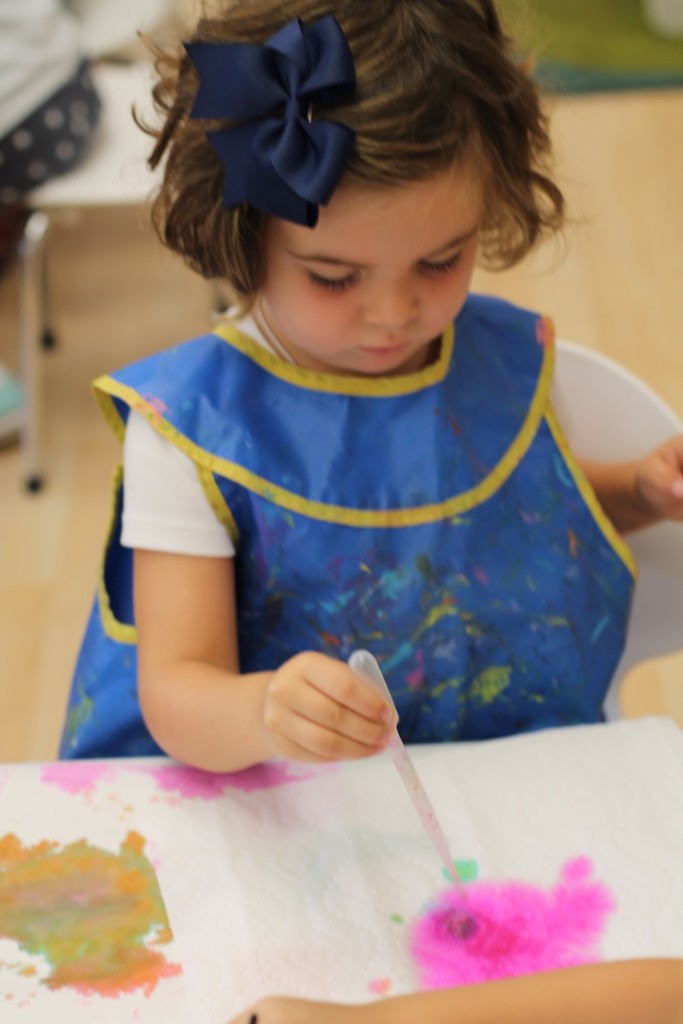
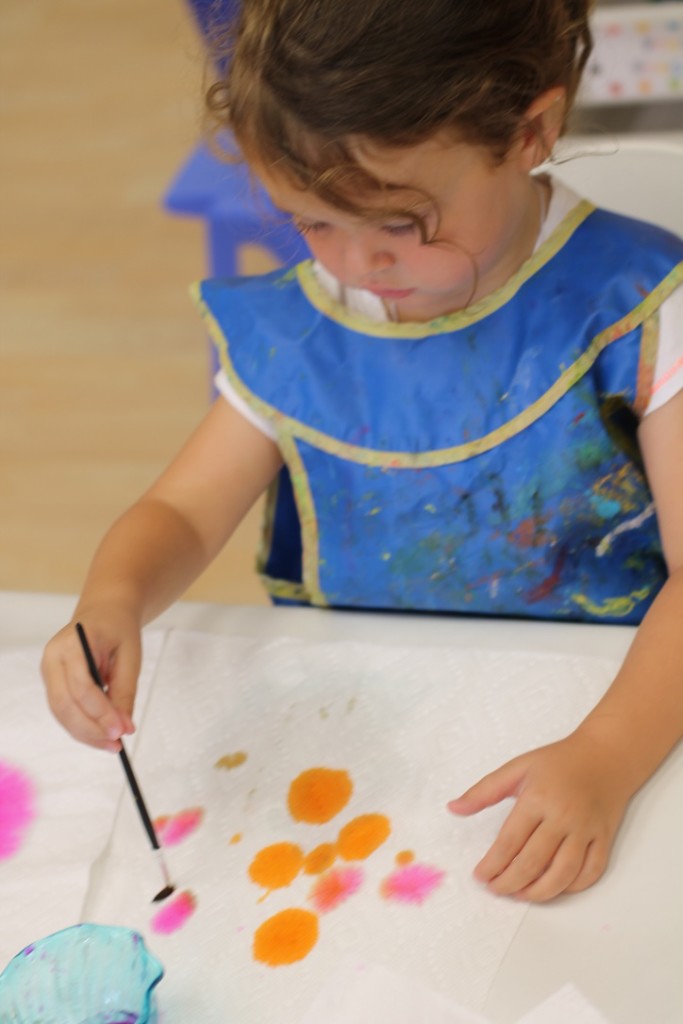
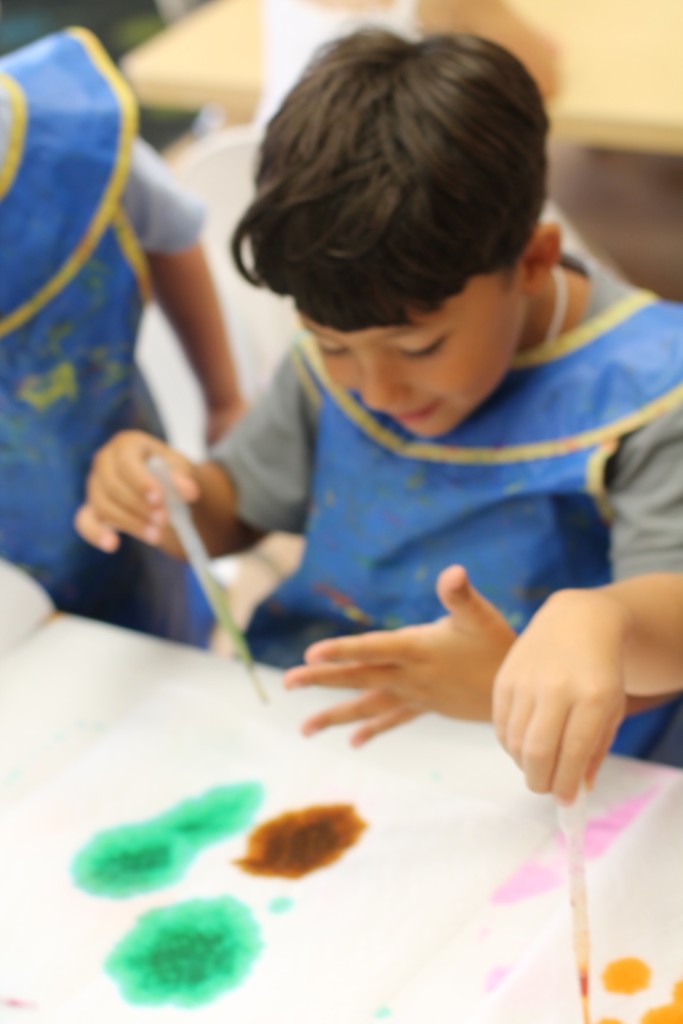
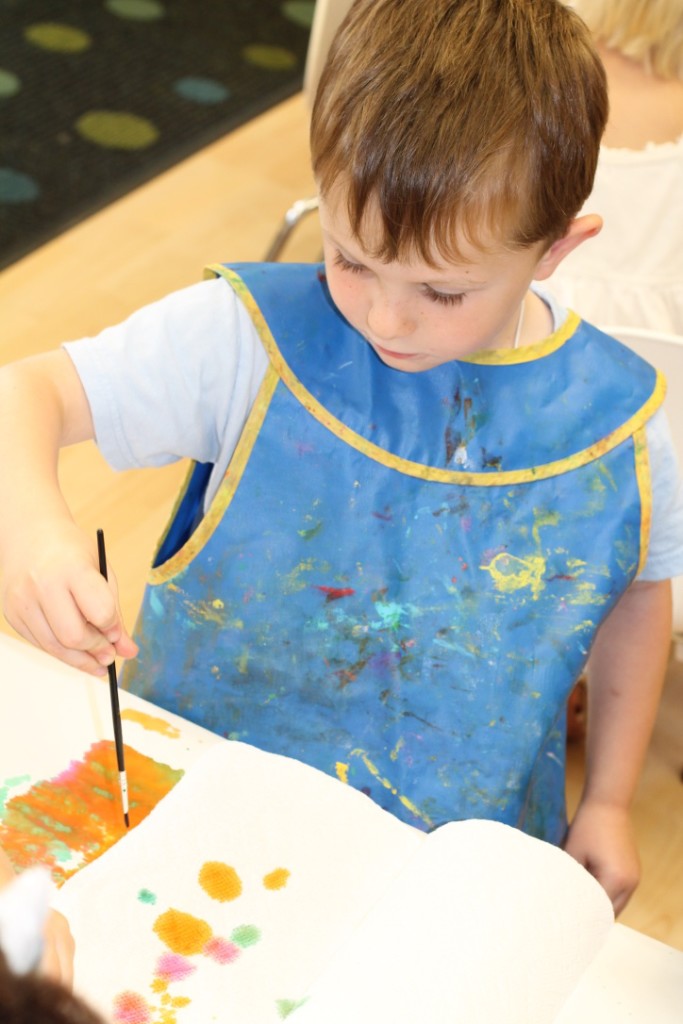
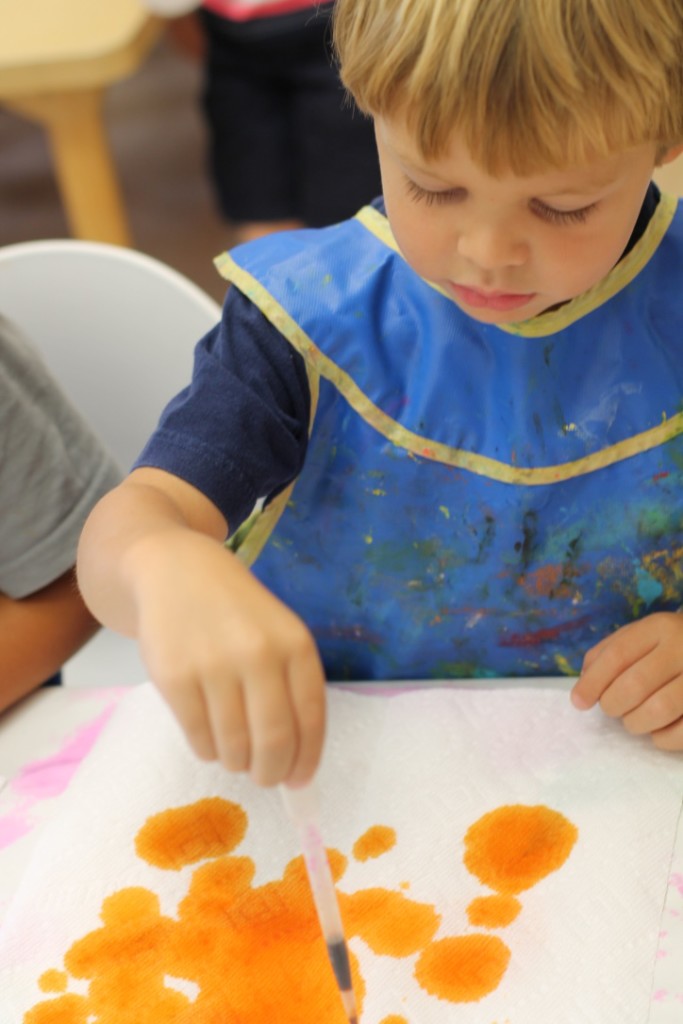
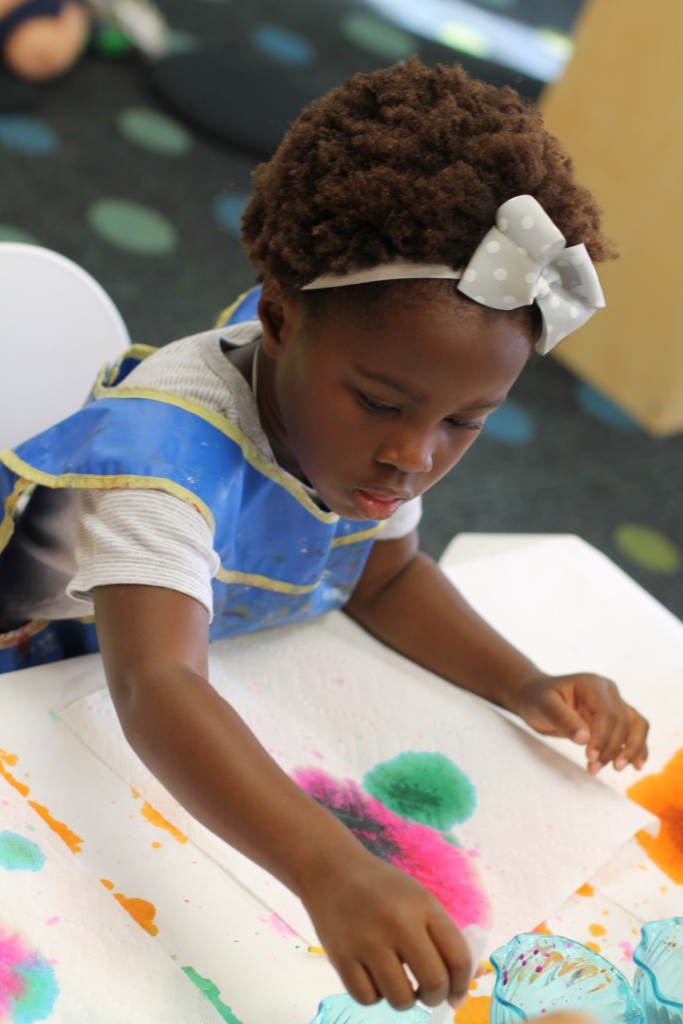
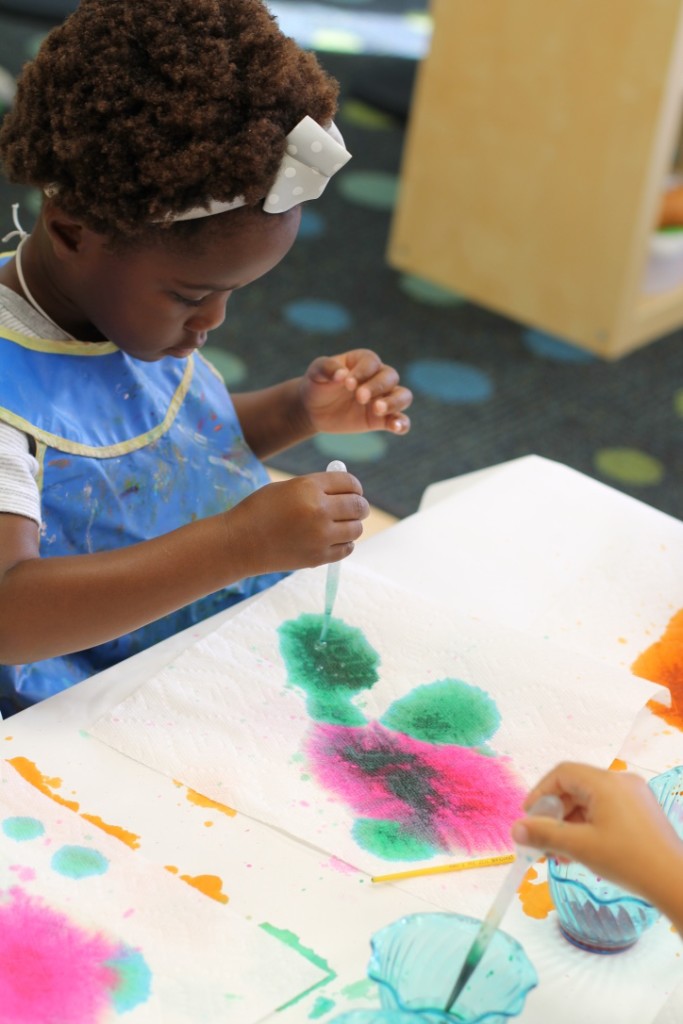
Young children function best when working in small groups due to the fact that their social and cognitive skills are still developing. The bulk of our day is devoted to small group activities to help children grow both socially and cognitively. When children work with only a few other children, in a small group setting, they learn important lessons about cooperation, compromise and the give and take of conversation. Also, when working in small groups with a teacher, children are able to receive the more focused attention they need for completing complex tasks and activities.
This week we began adding our Morning Table into our day! Each day when the children come in, there is a fun activity for them to do on the table. Sometimes it may be literacy related, shape related, or number related. Other days it might just be some messy fun! This week, one of our activities was working on the letter of the week, Letter A, and some fine motor practice as well! Peeling off stickers is a great activity for your child to work on their fine motor skills at home too!
Creative Tots has specialized in the private education of both toddlers and preschool age children for over 15 years. We began in the heart of Madeira and now also have a new Mason location. We are specifically designed to focus on early childhood development for children ages 18 months to 5 years.

Click below to learn more about our program offerings:
